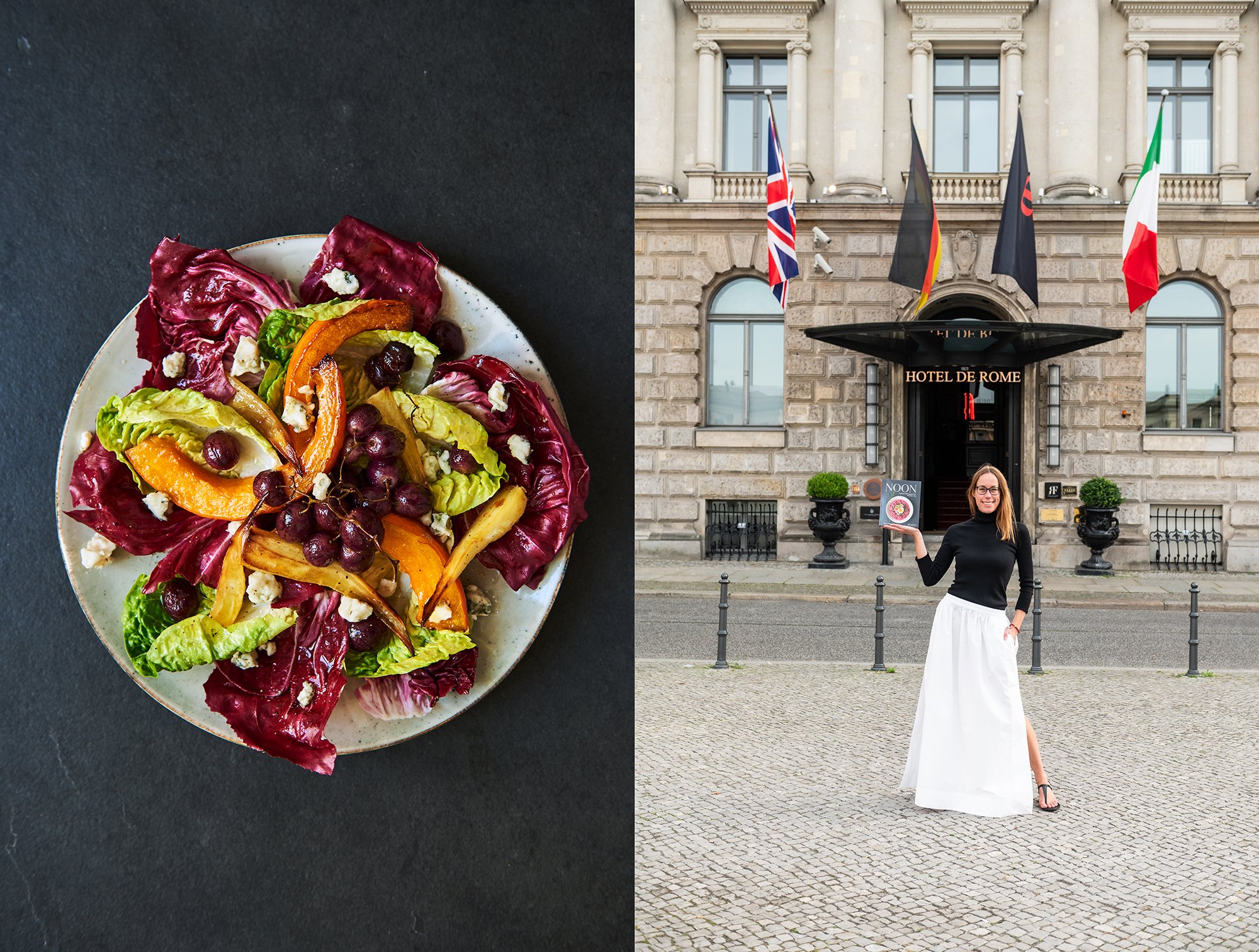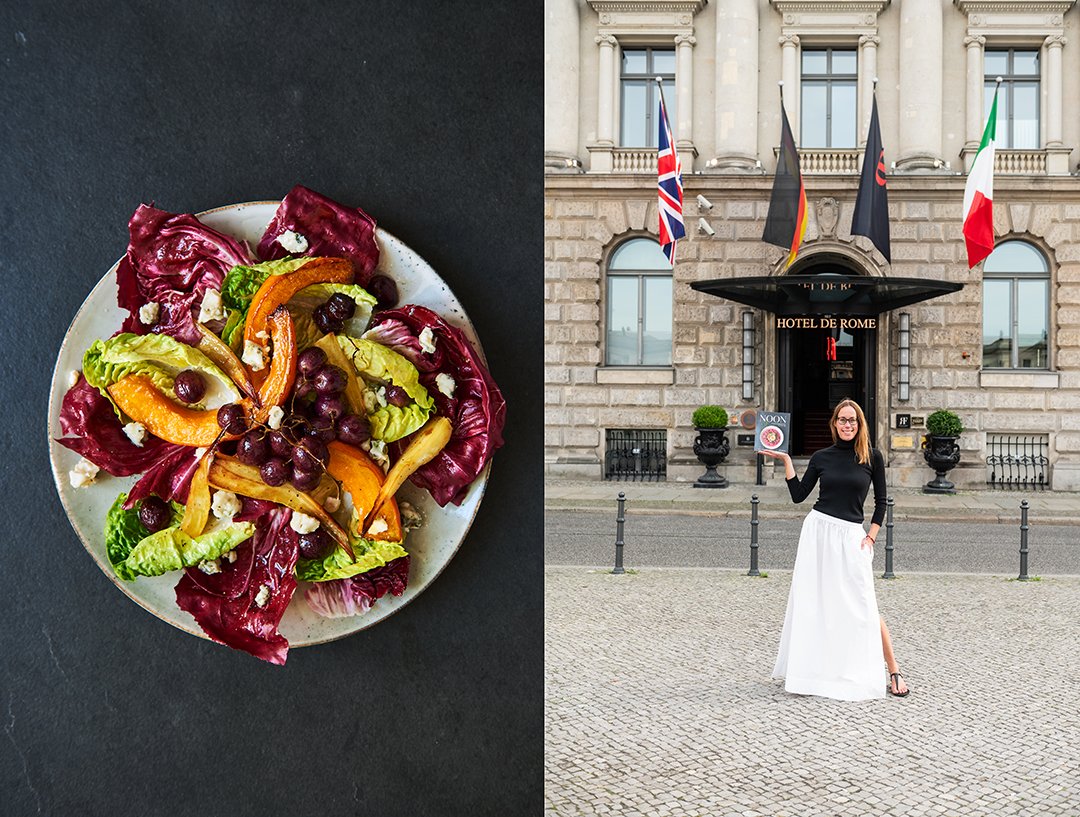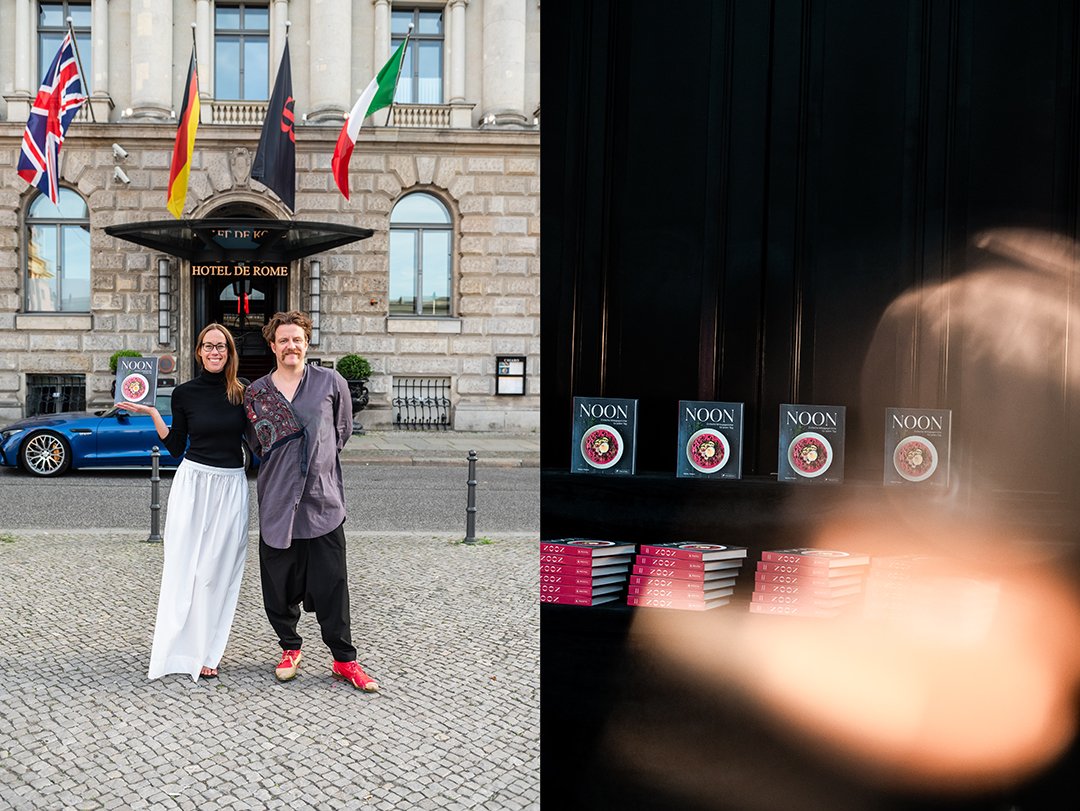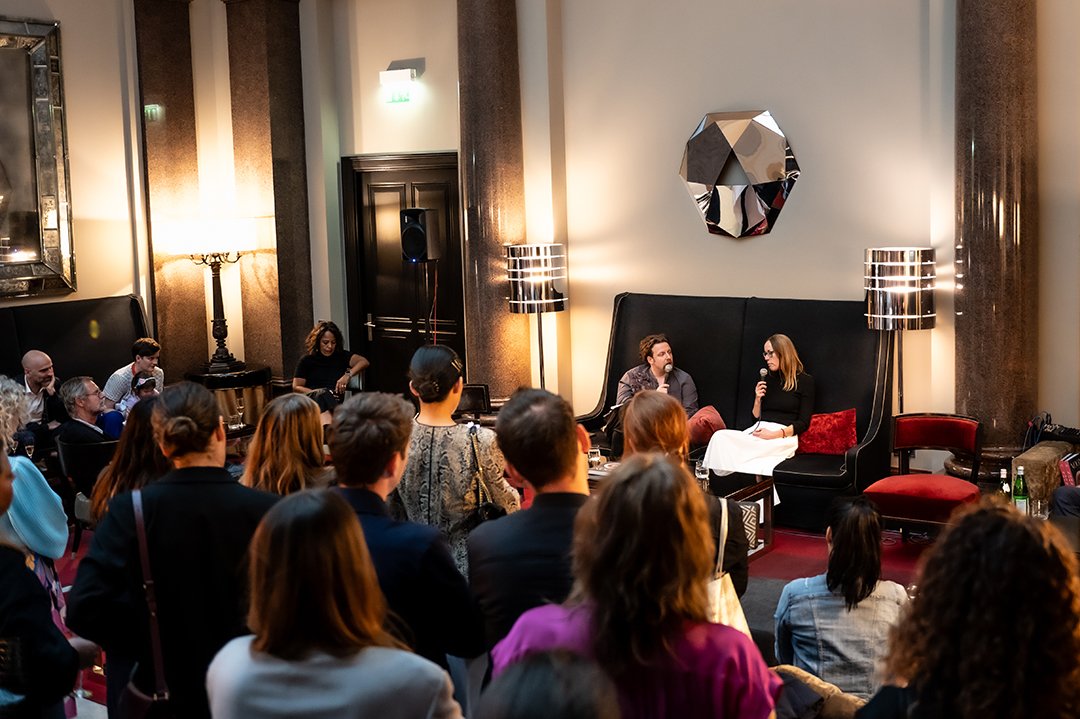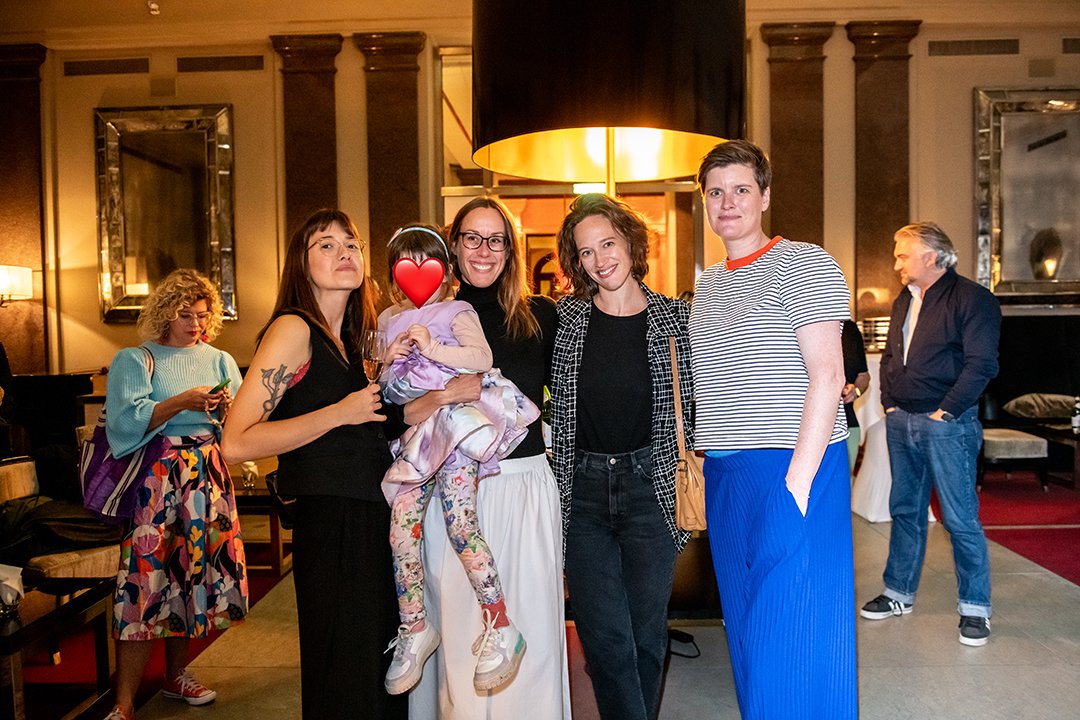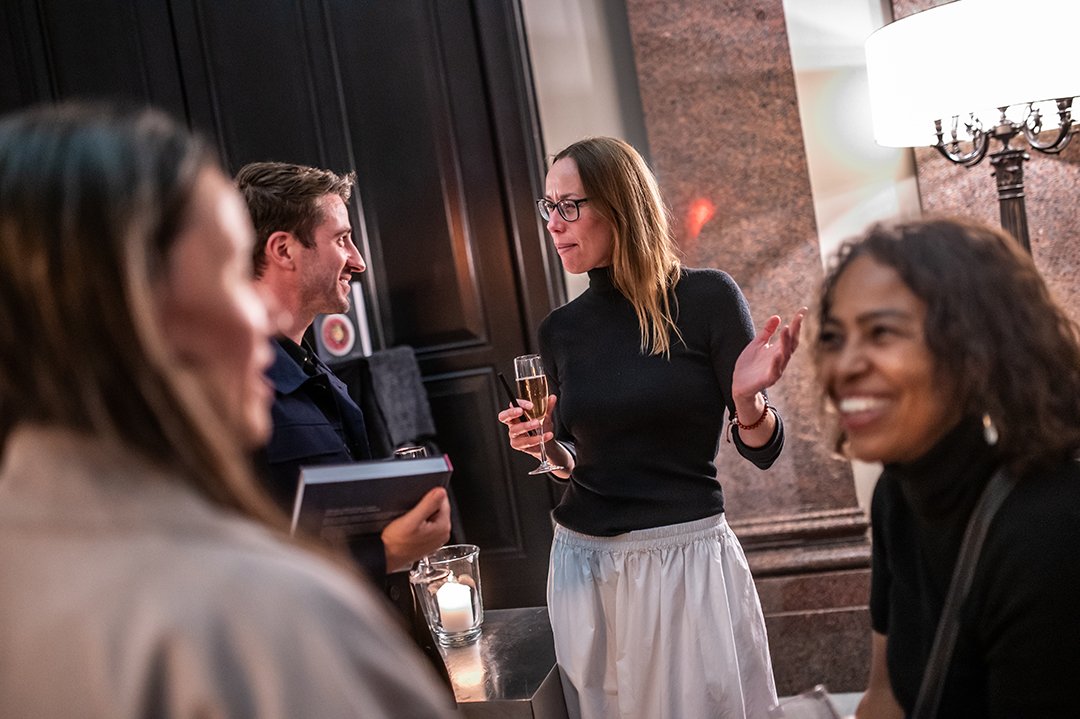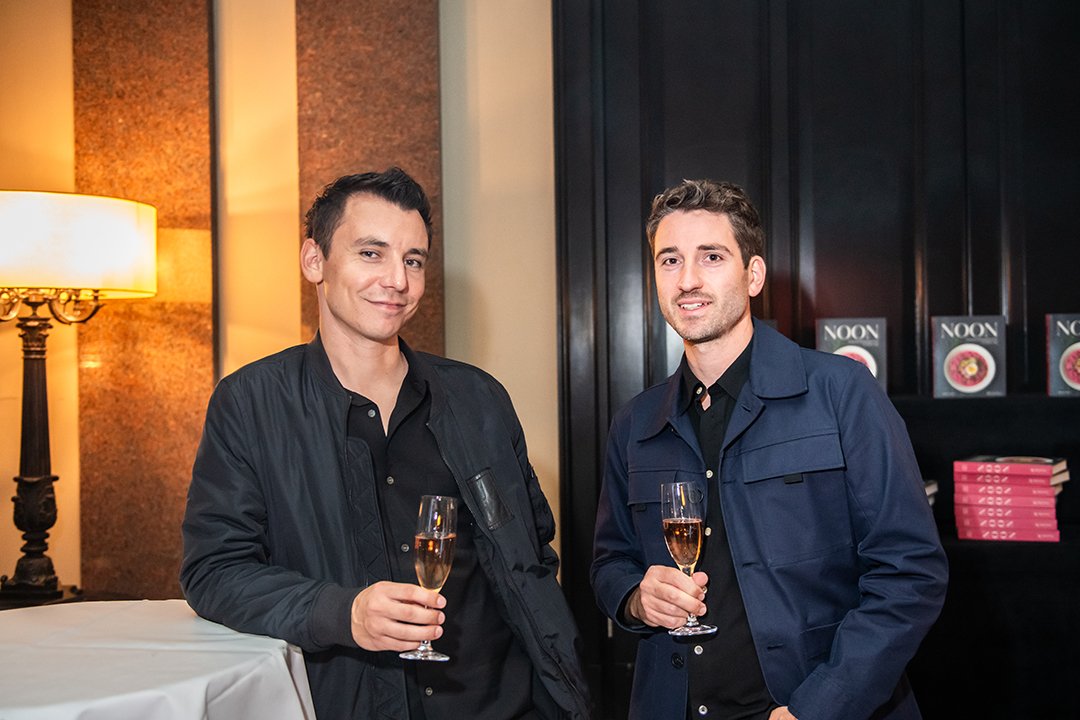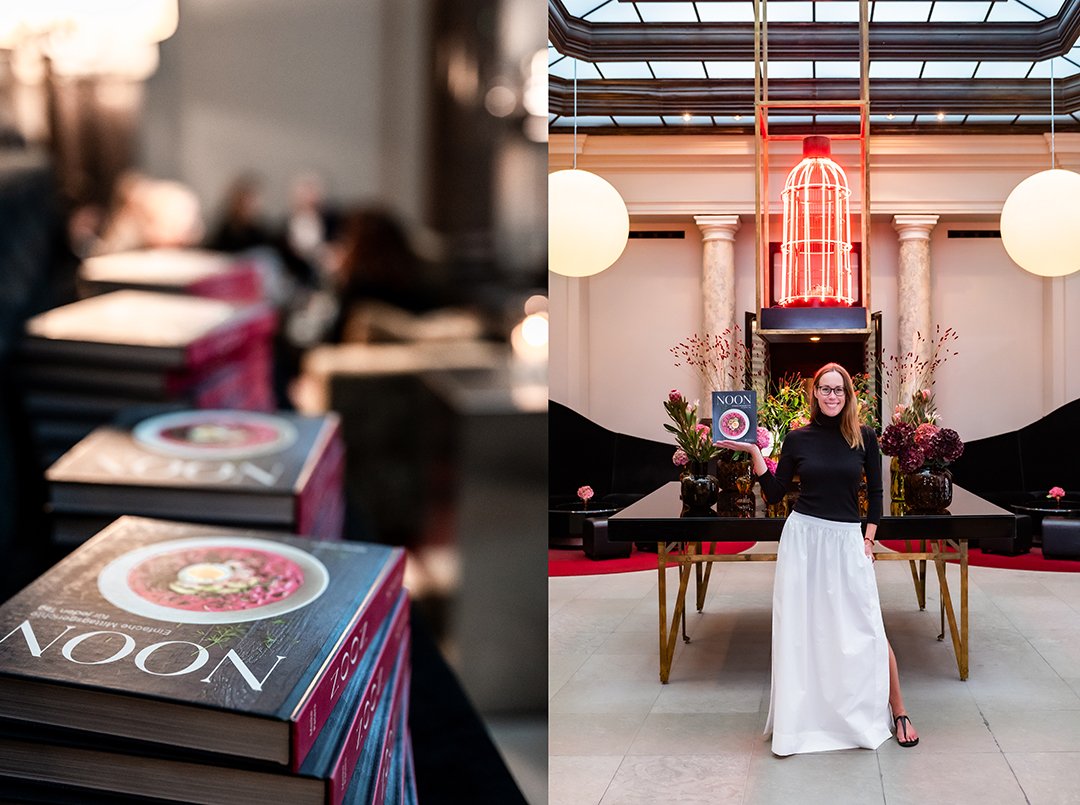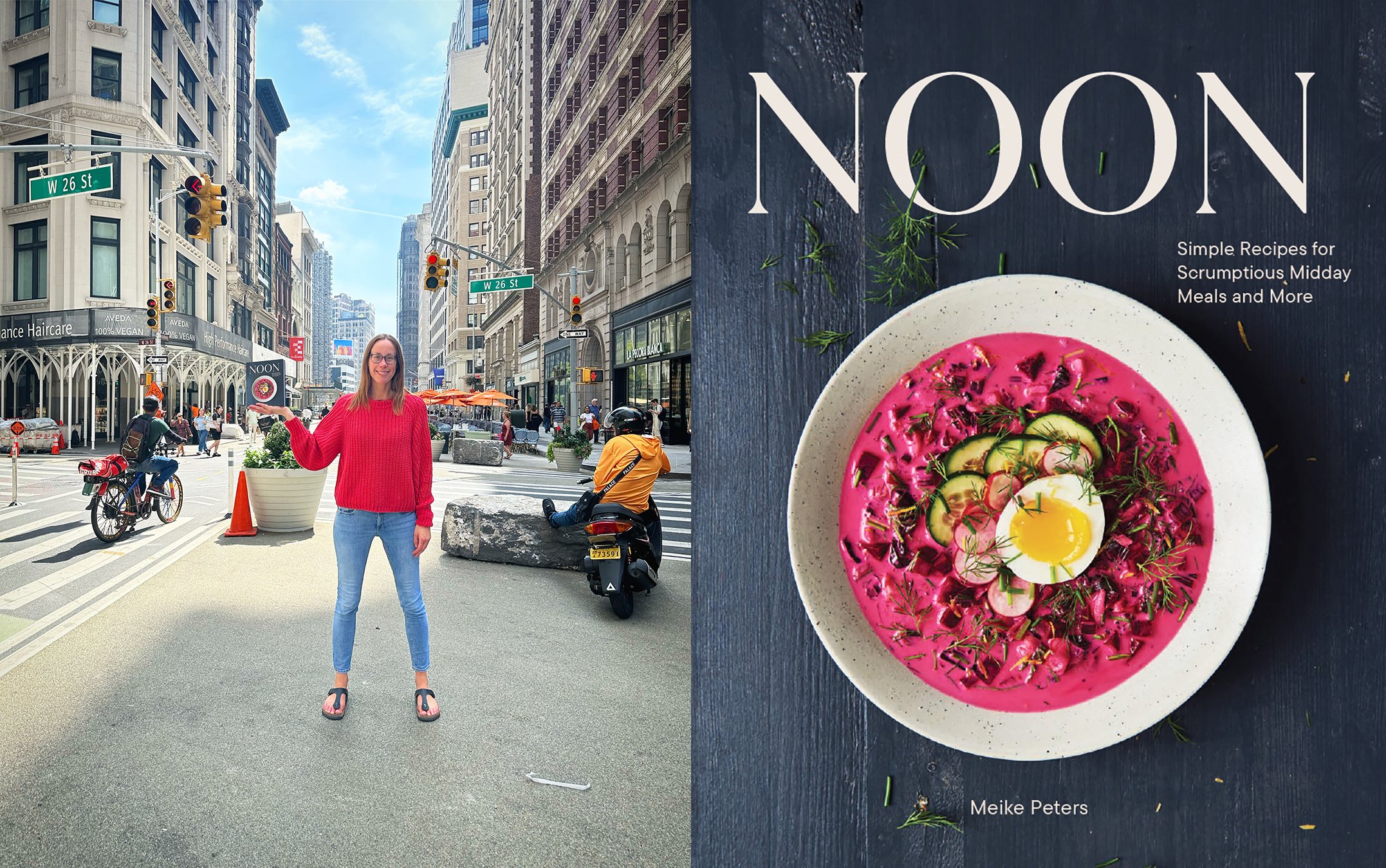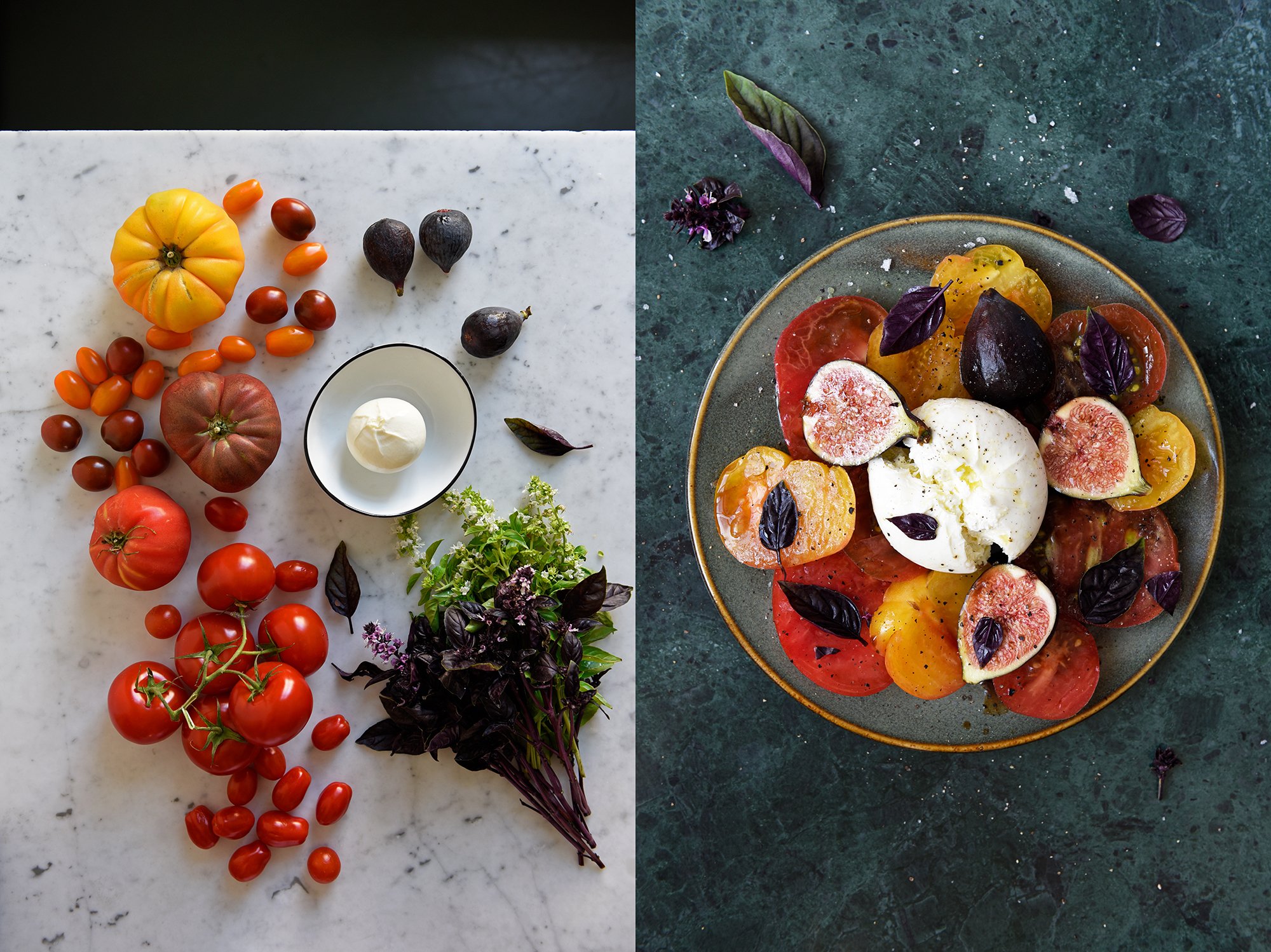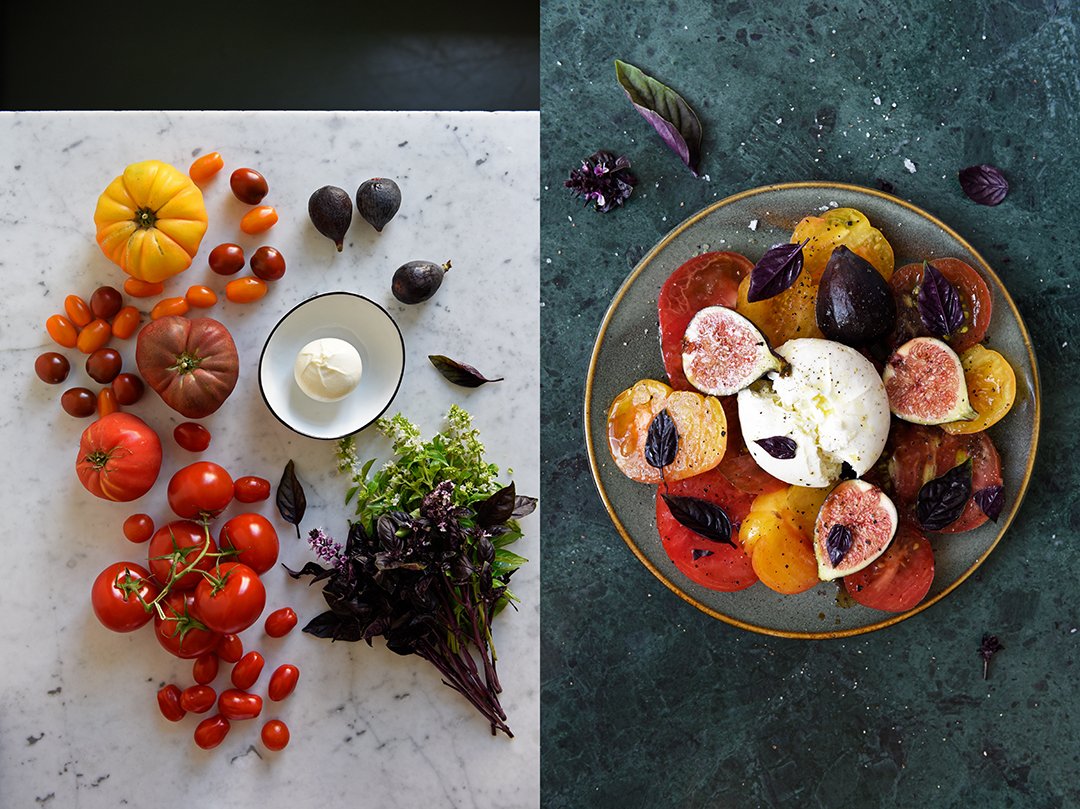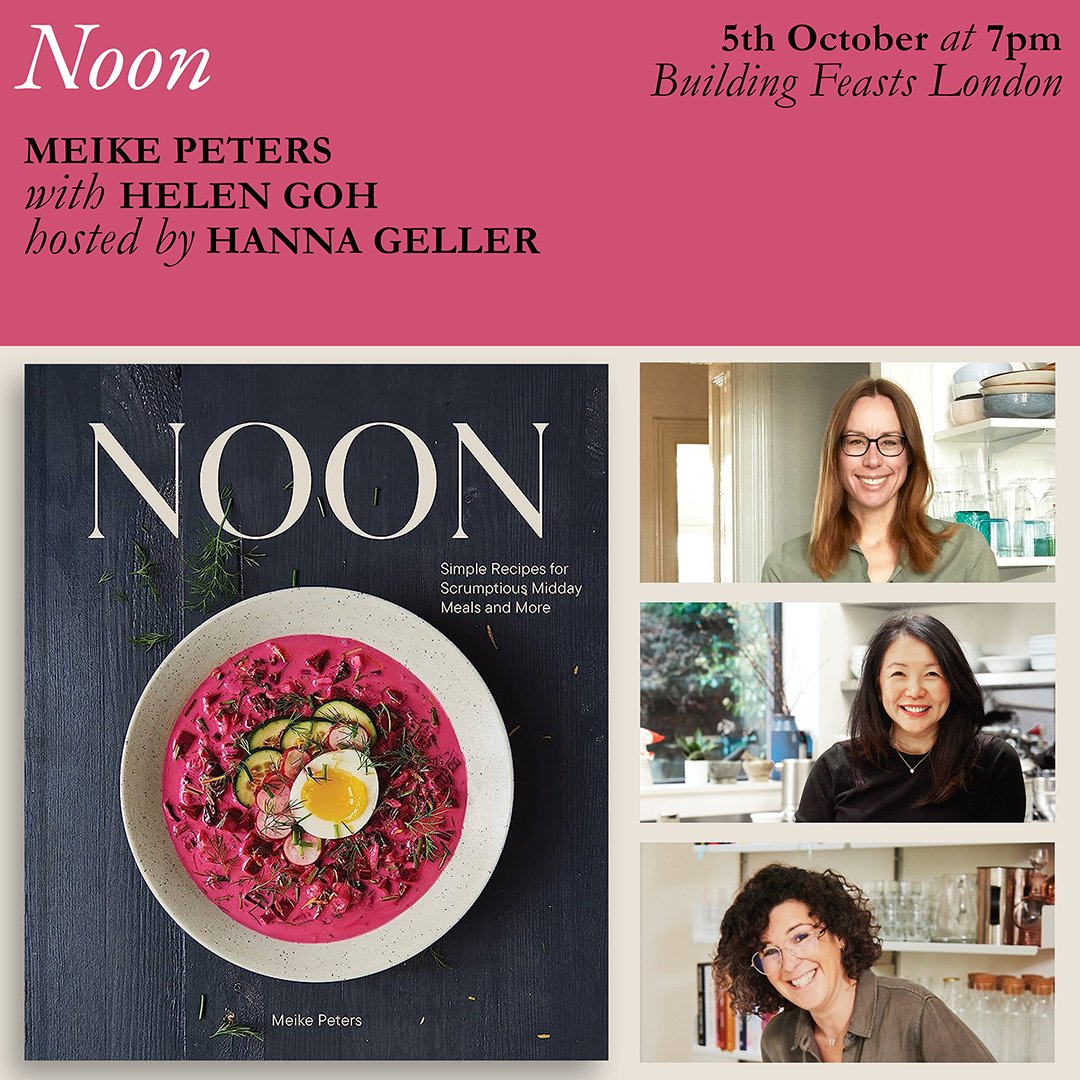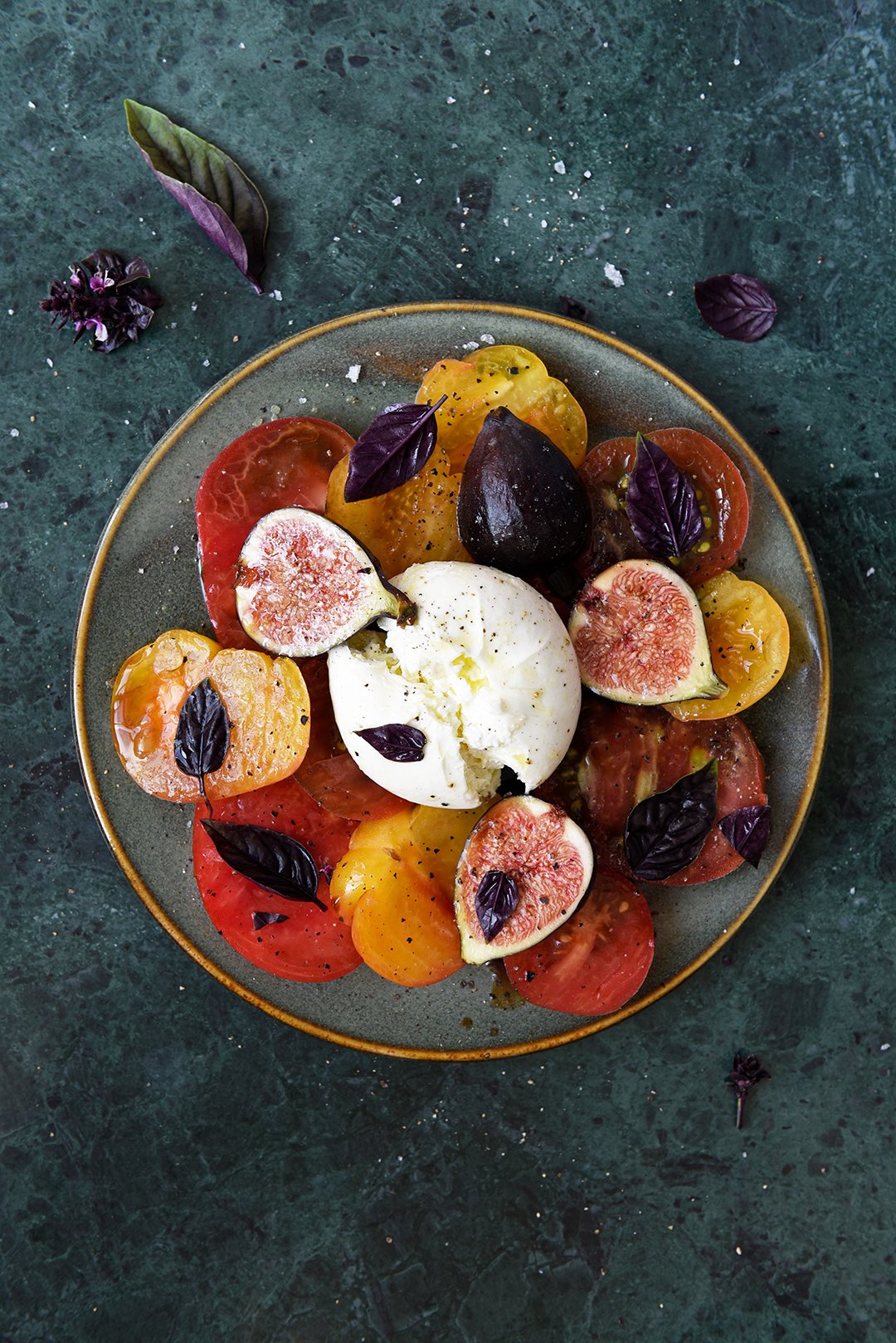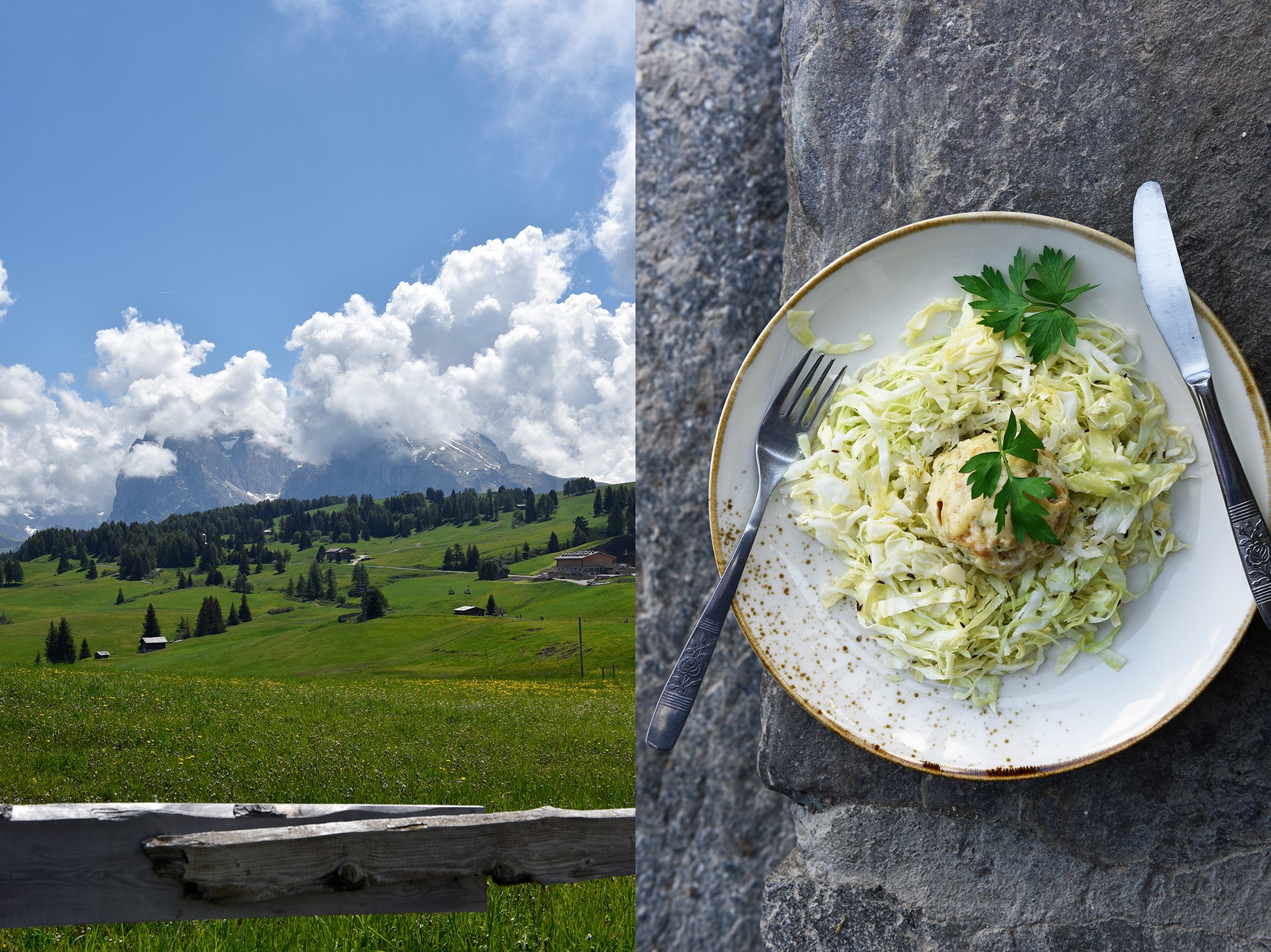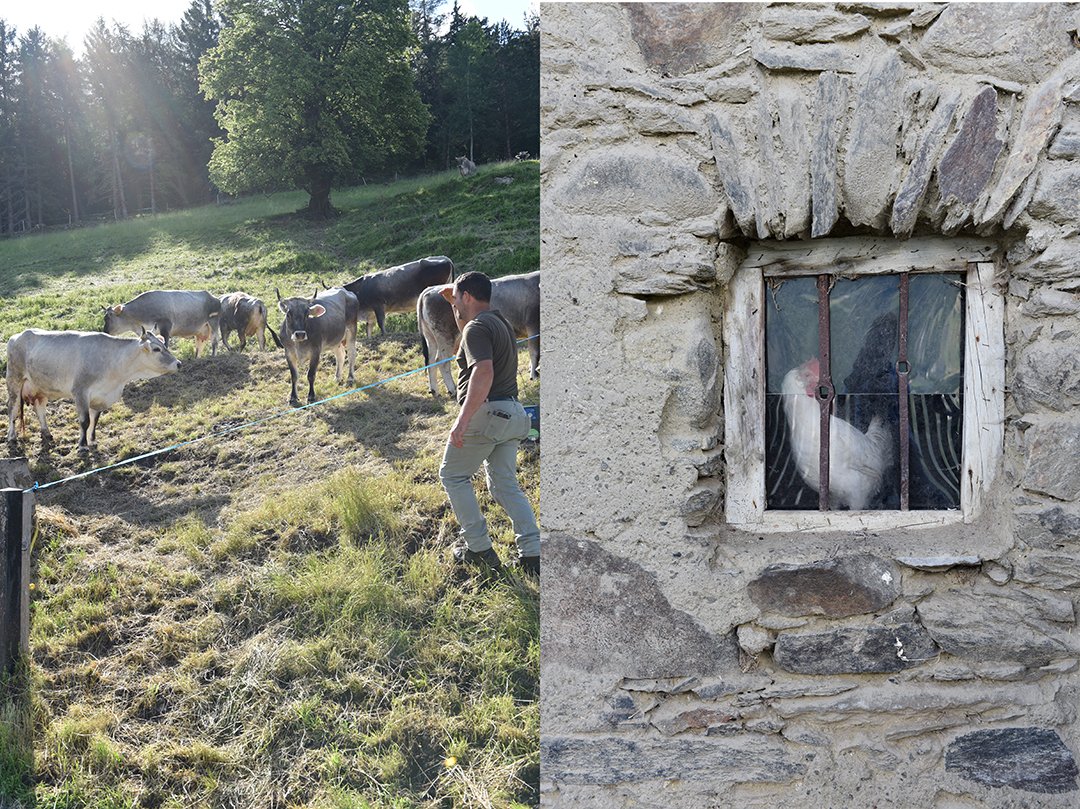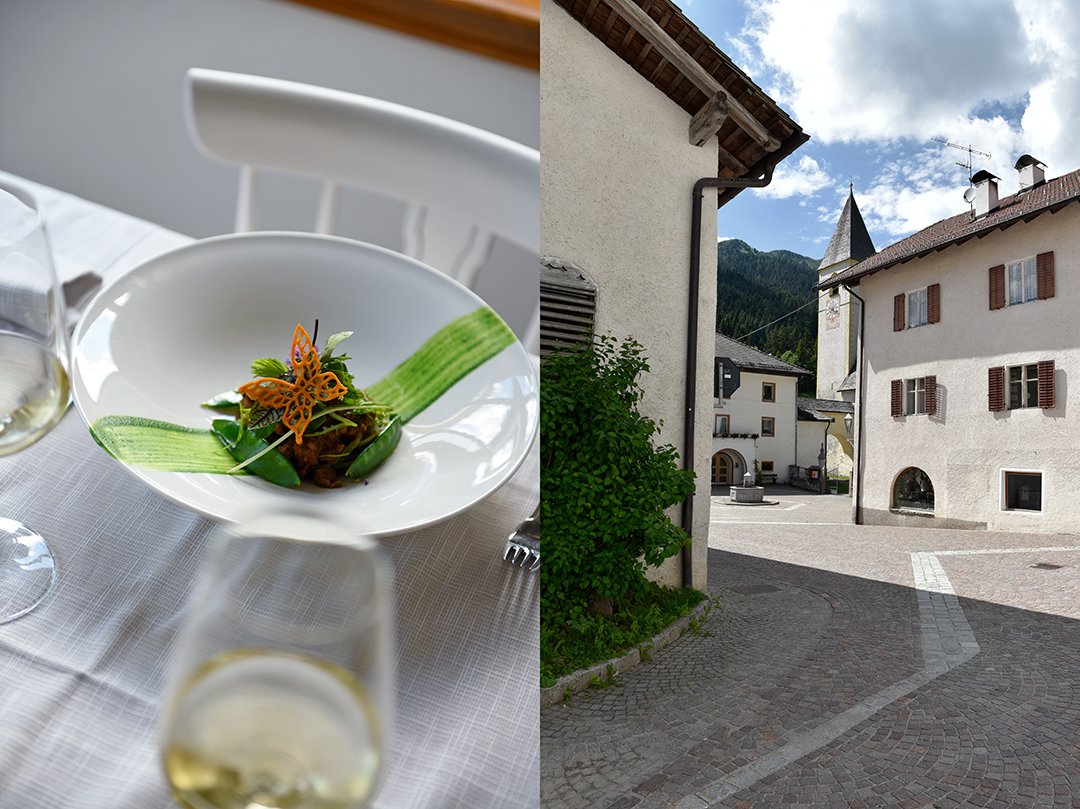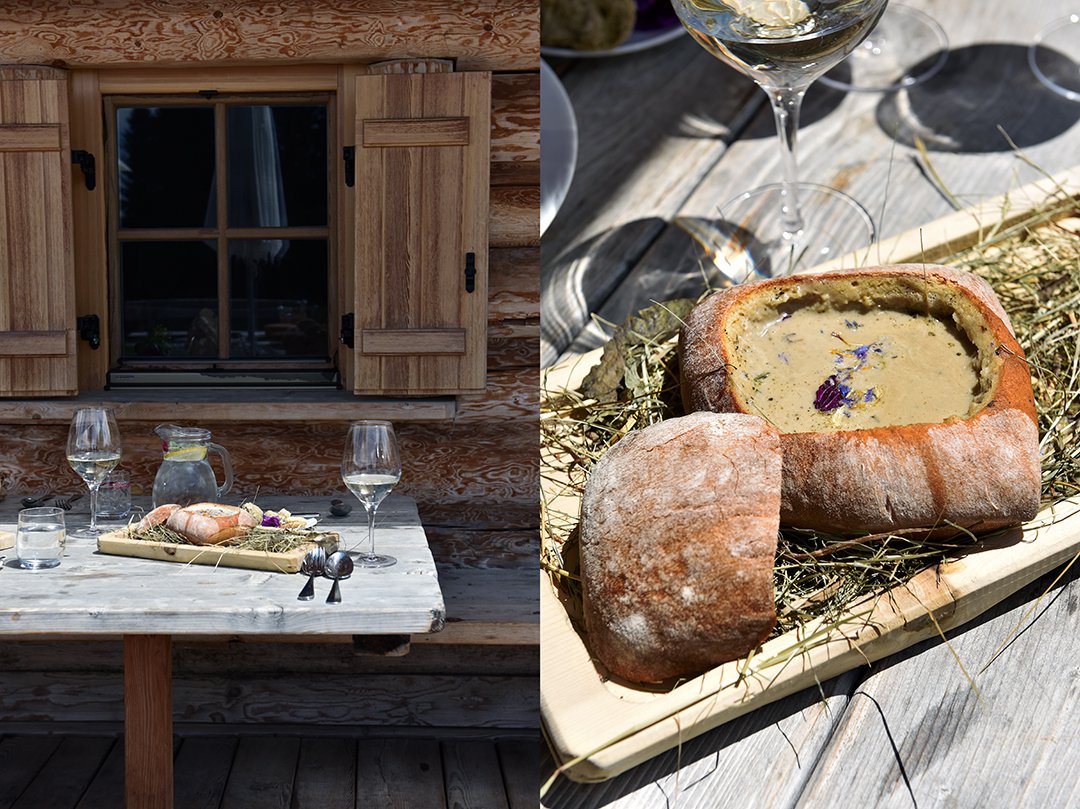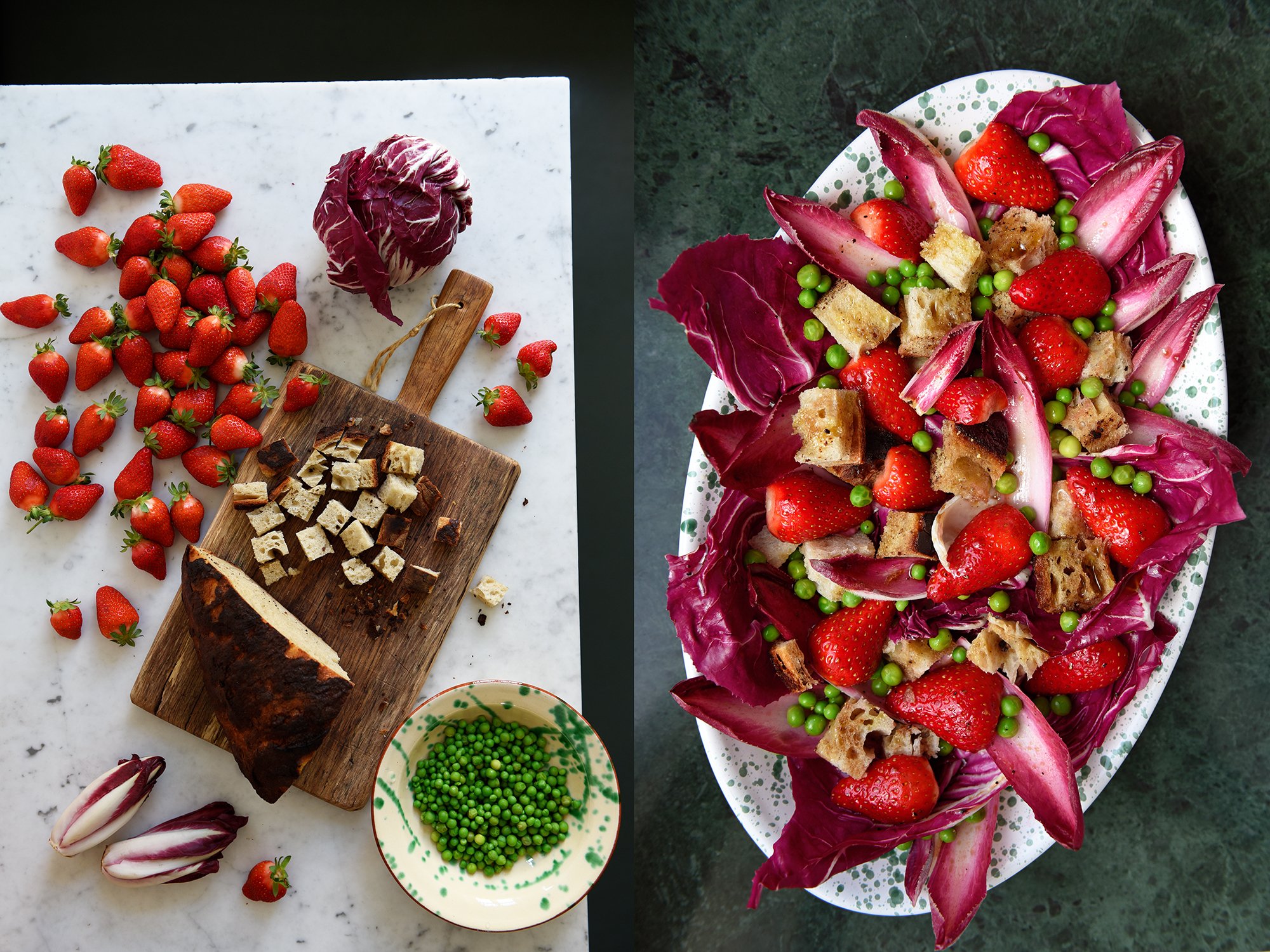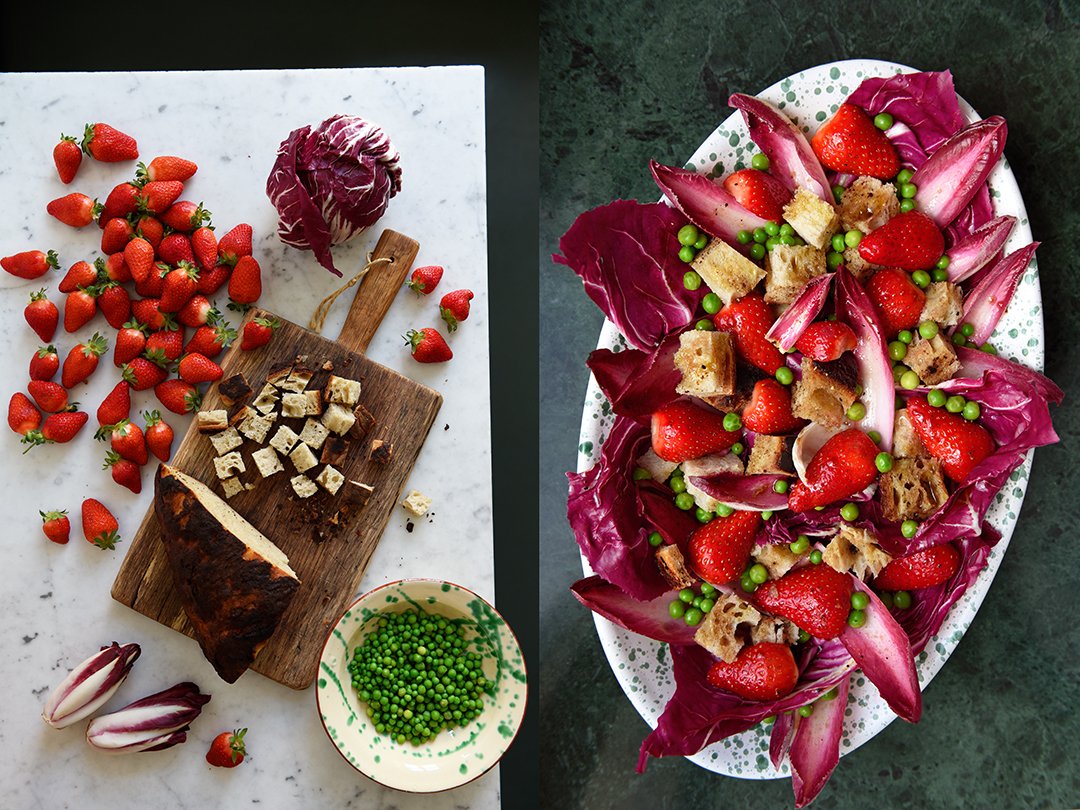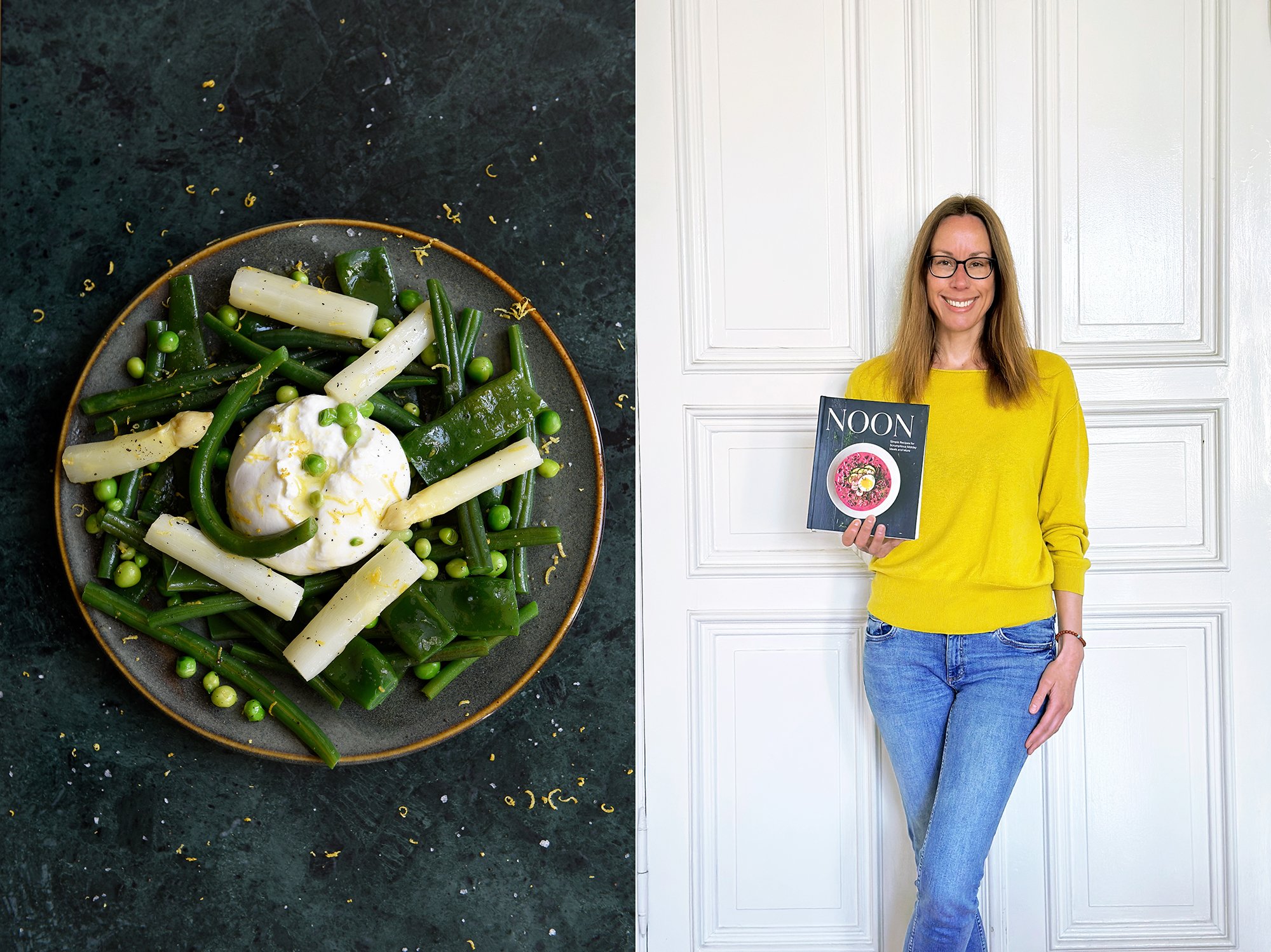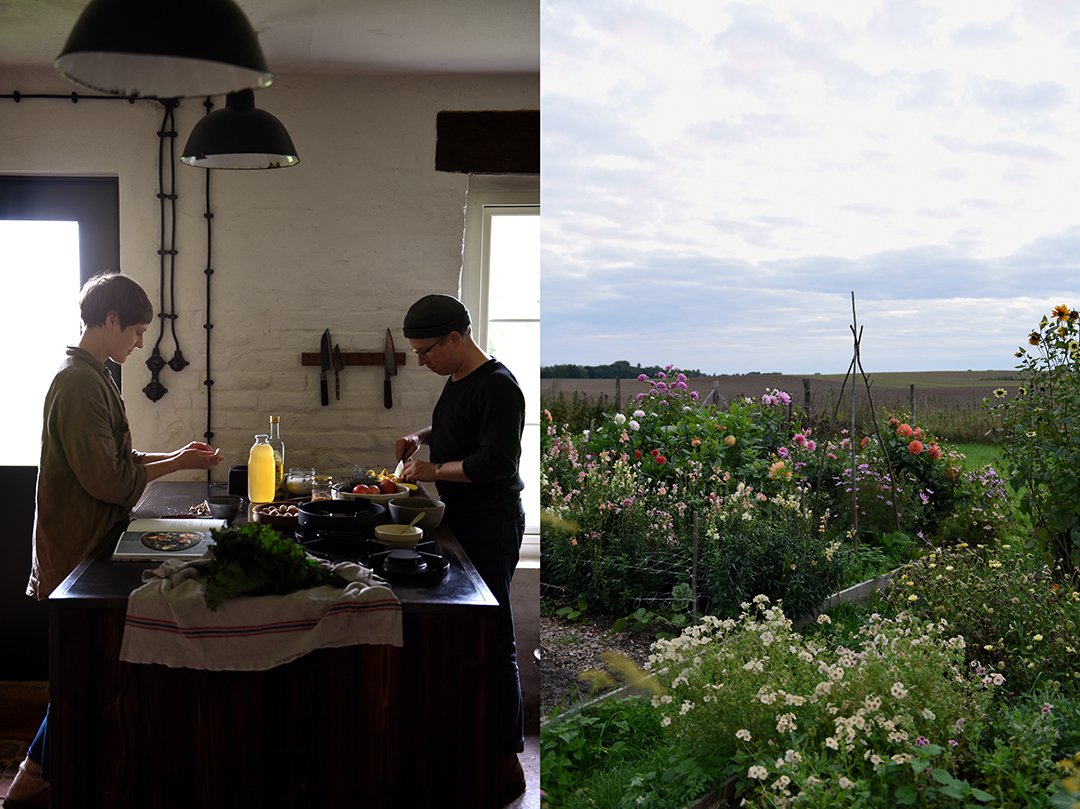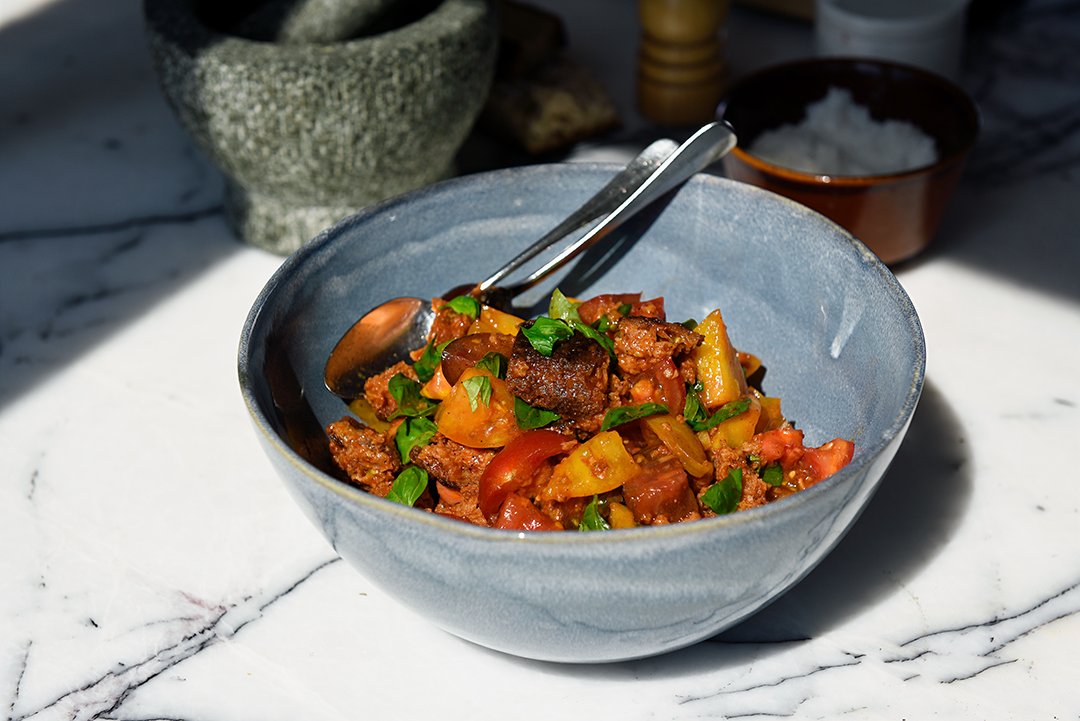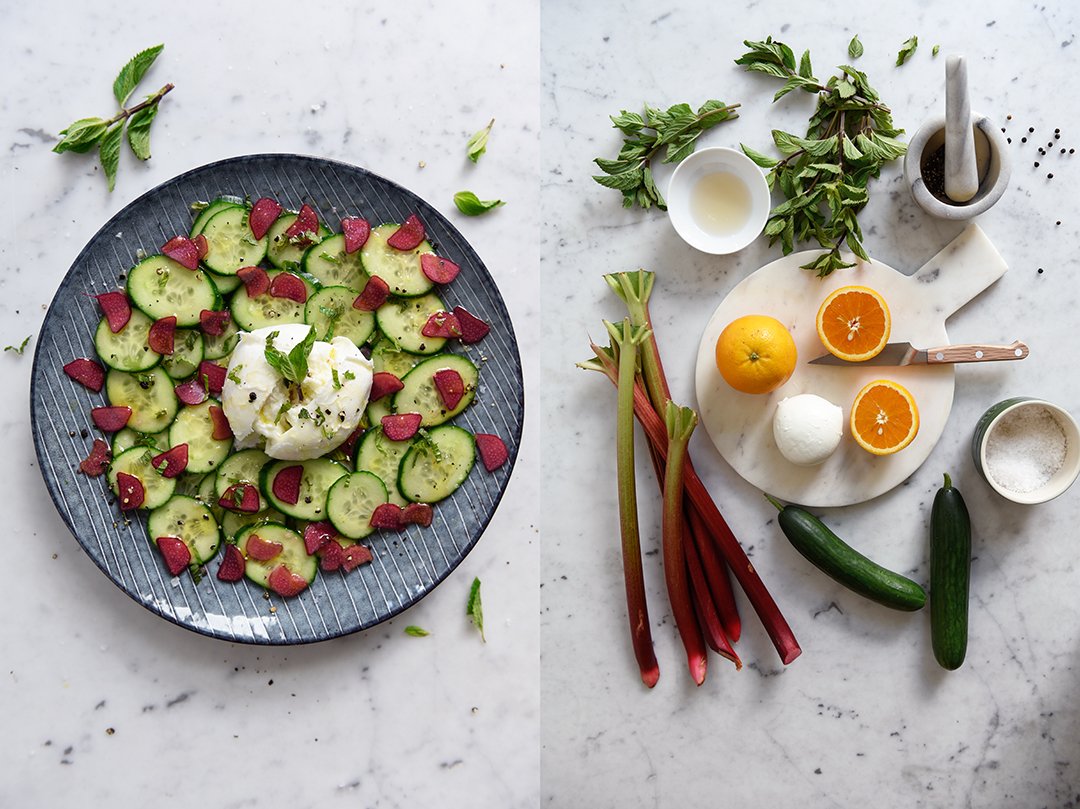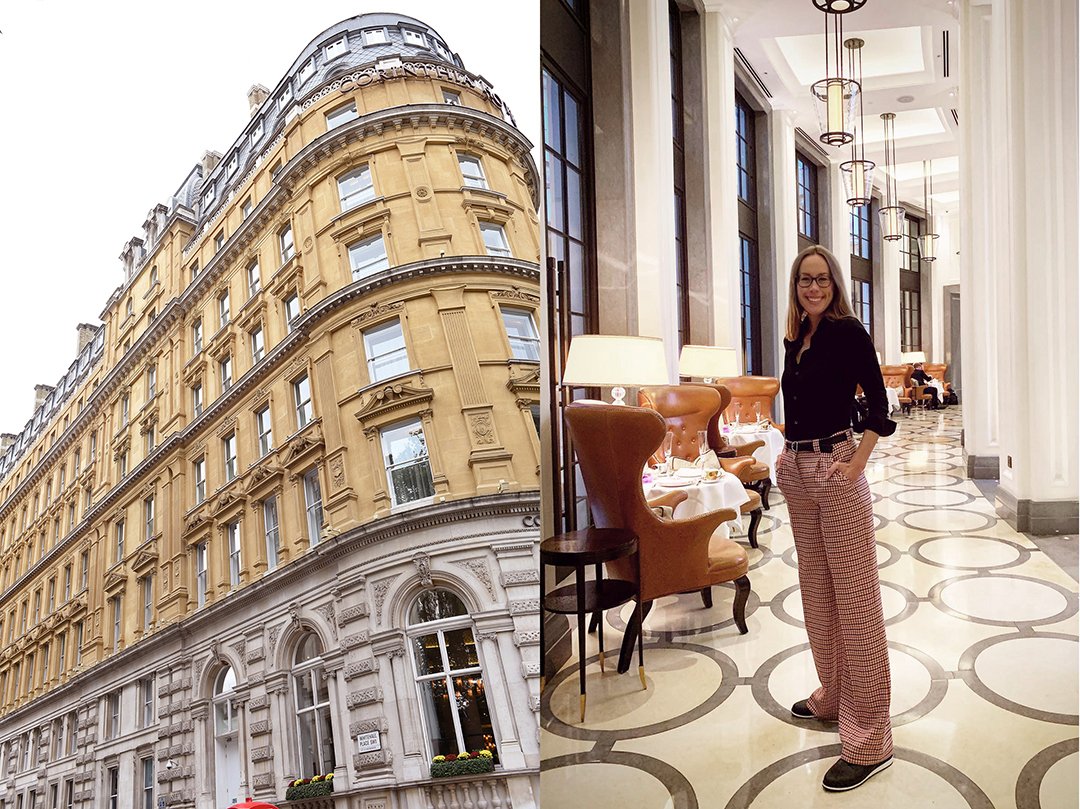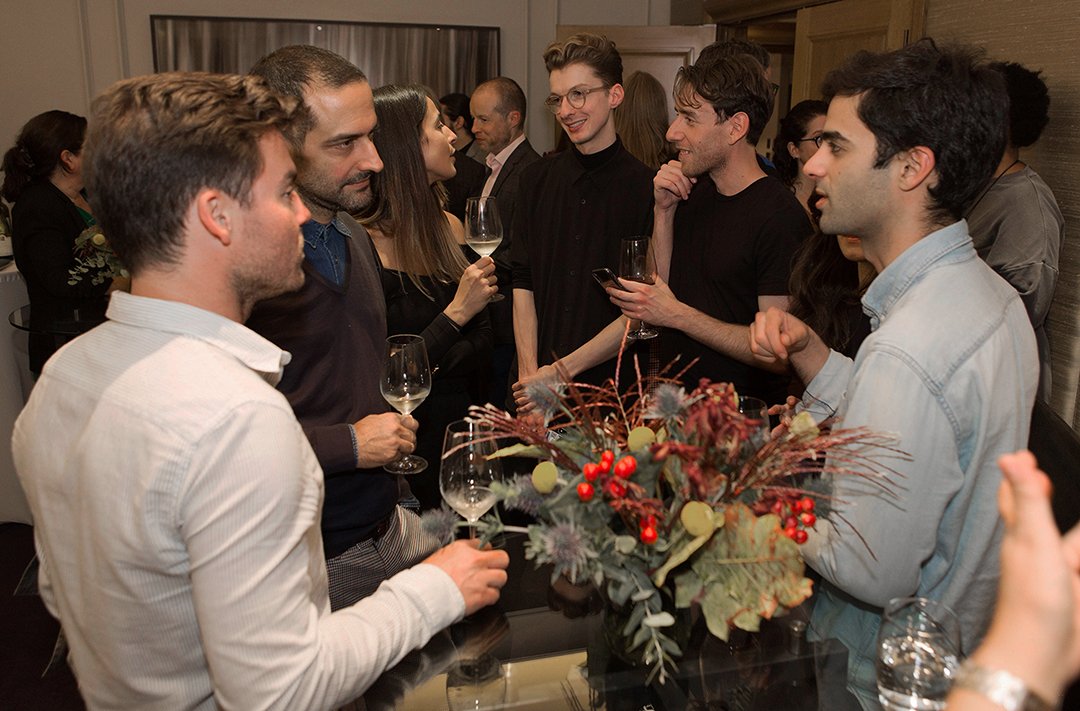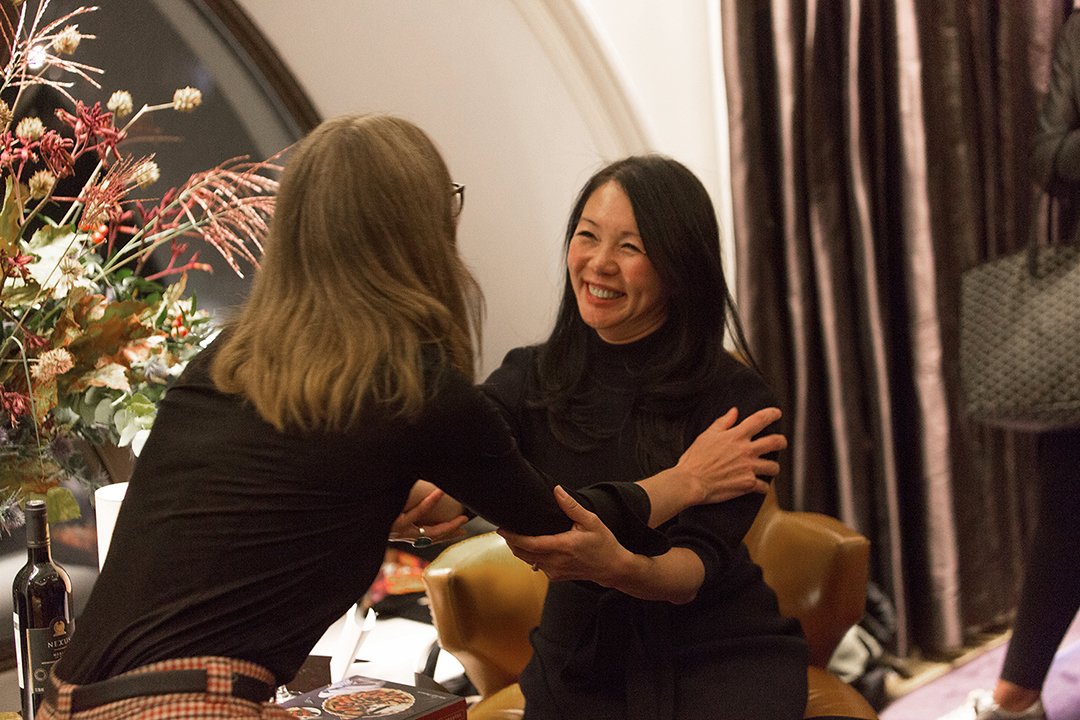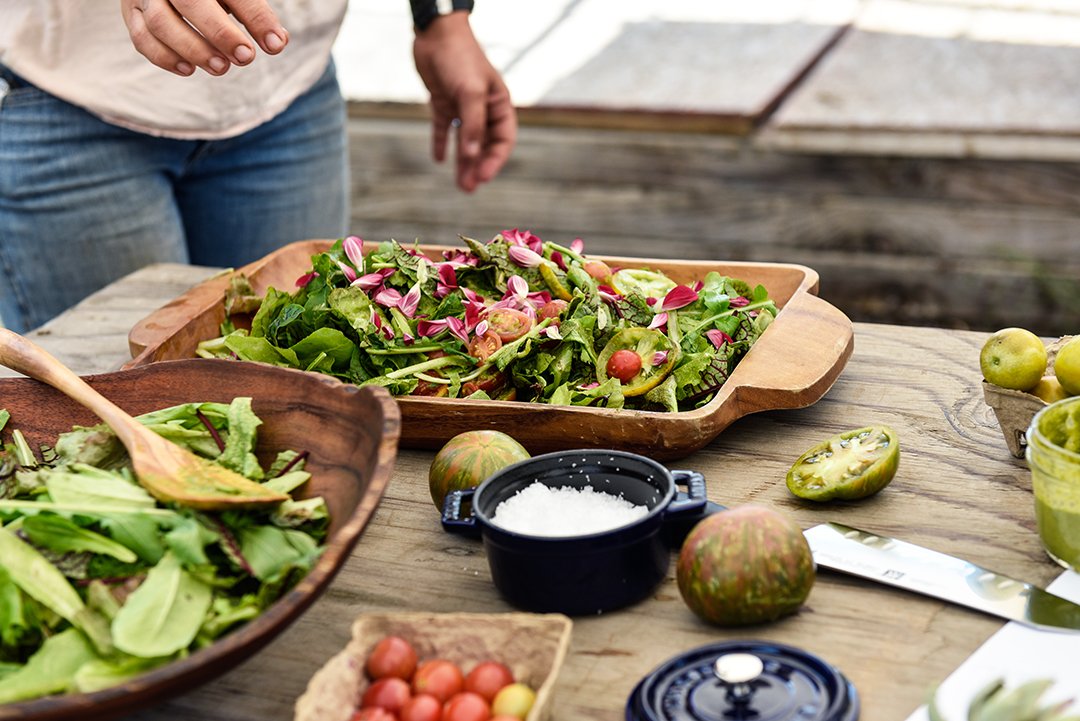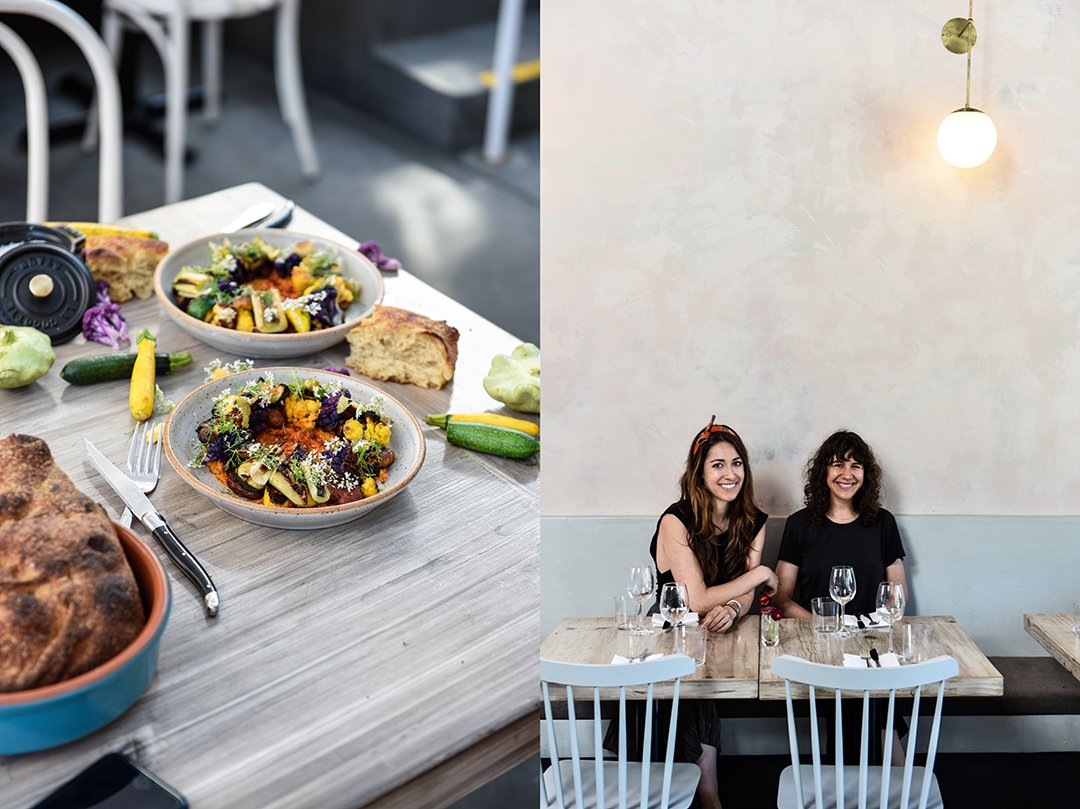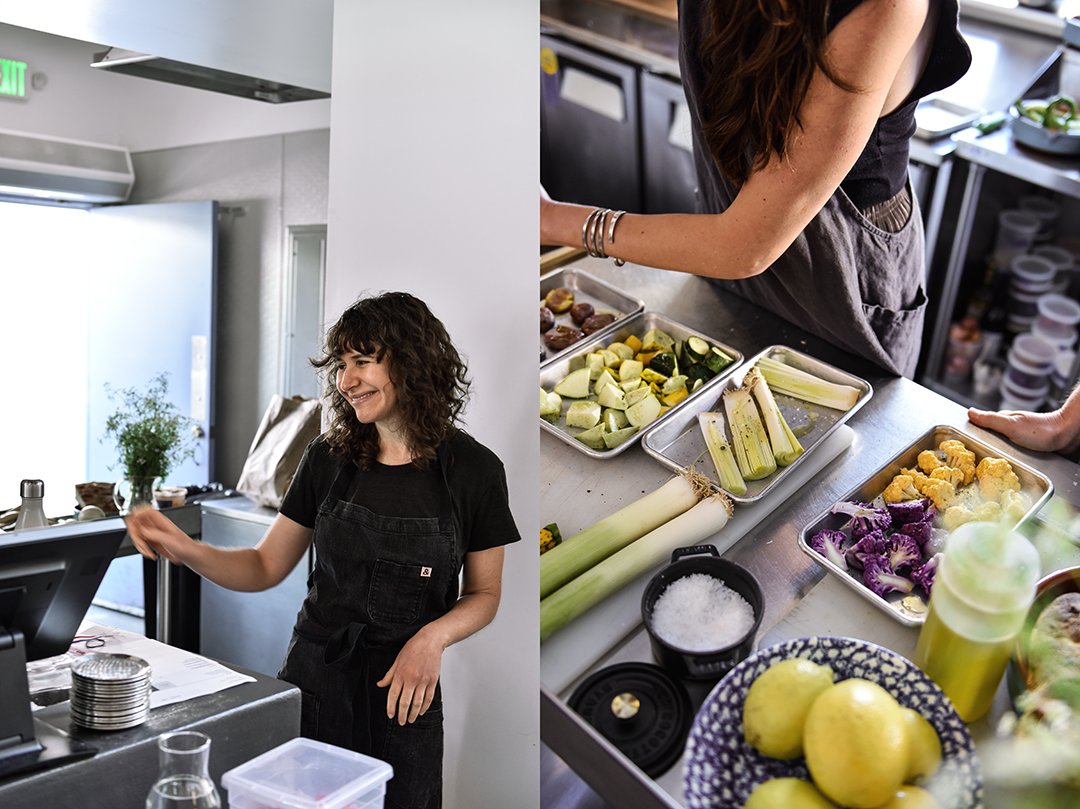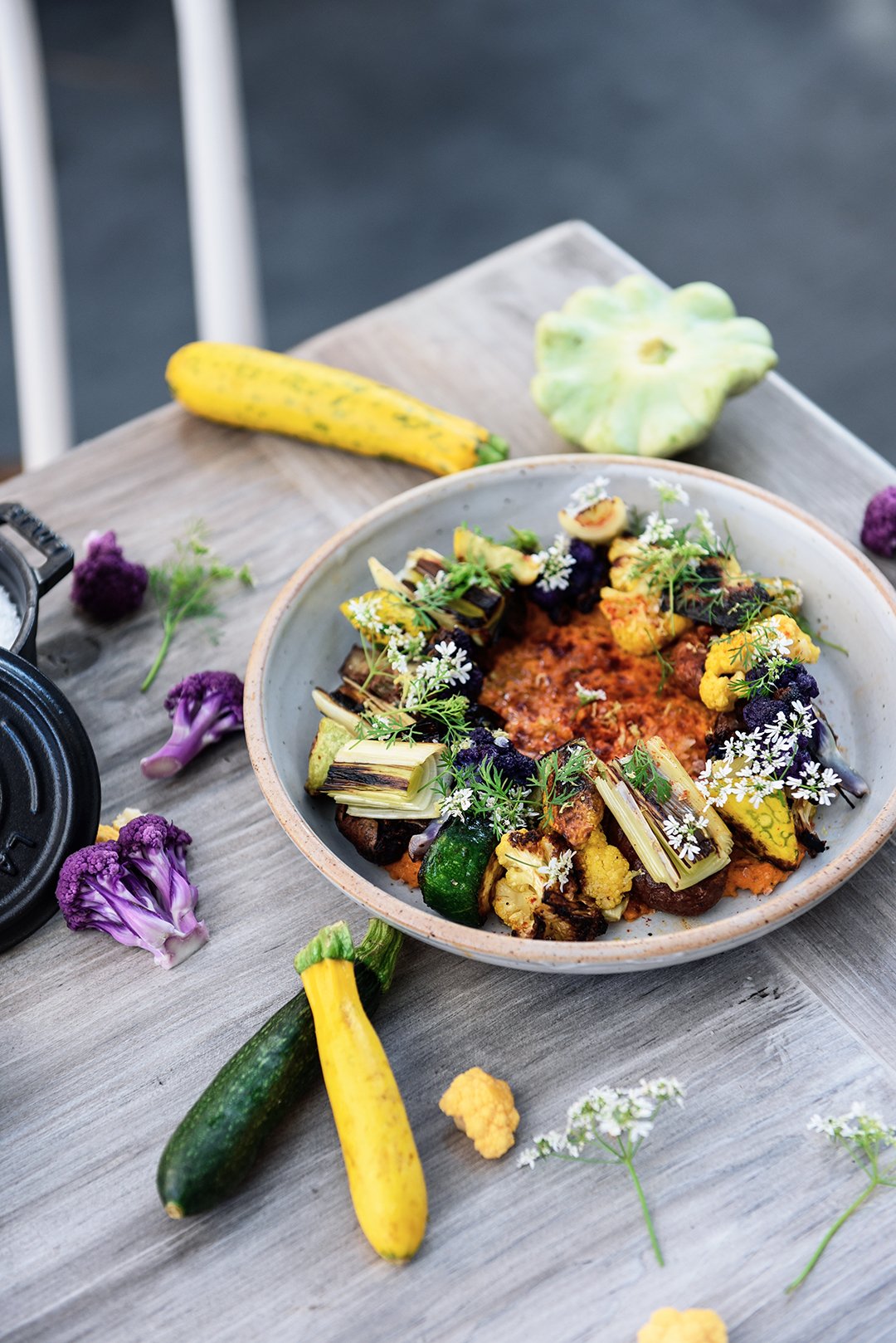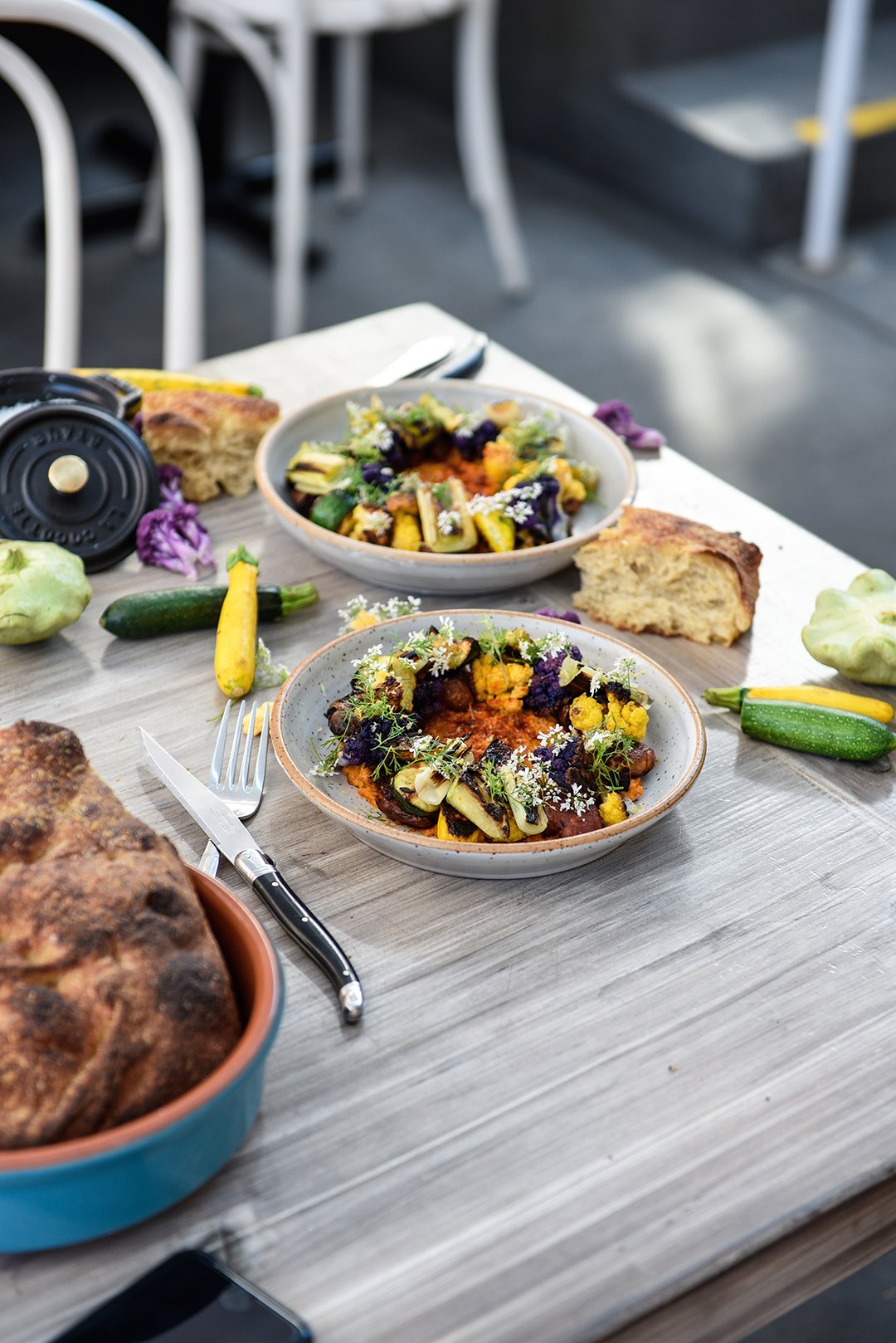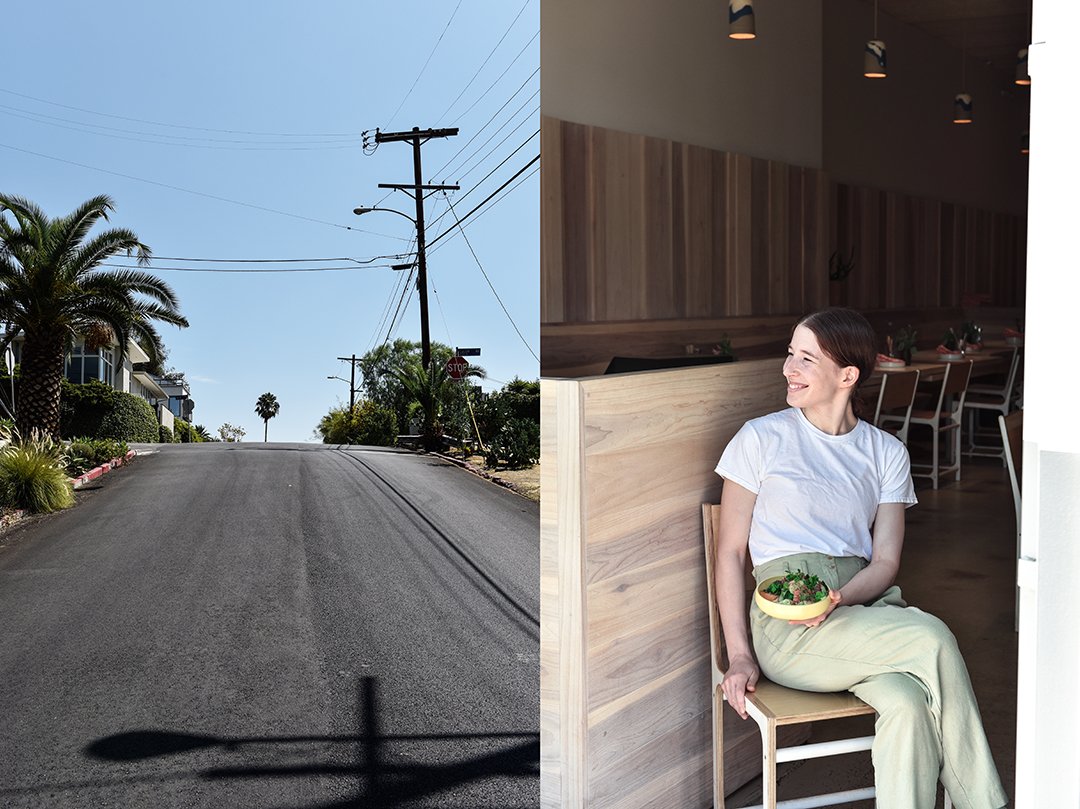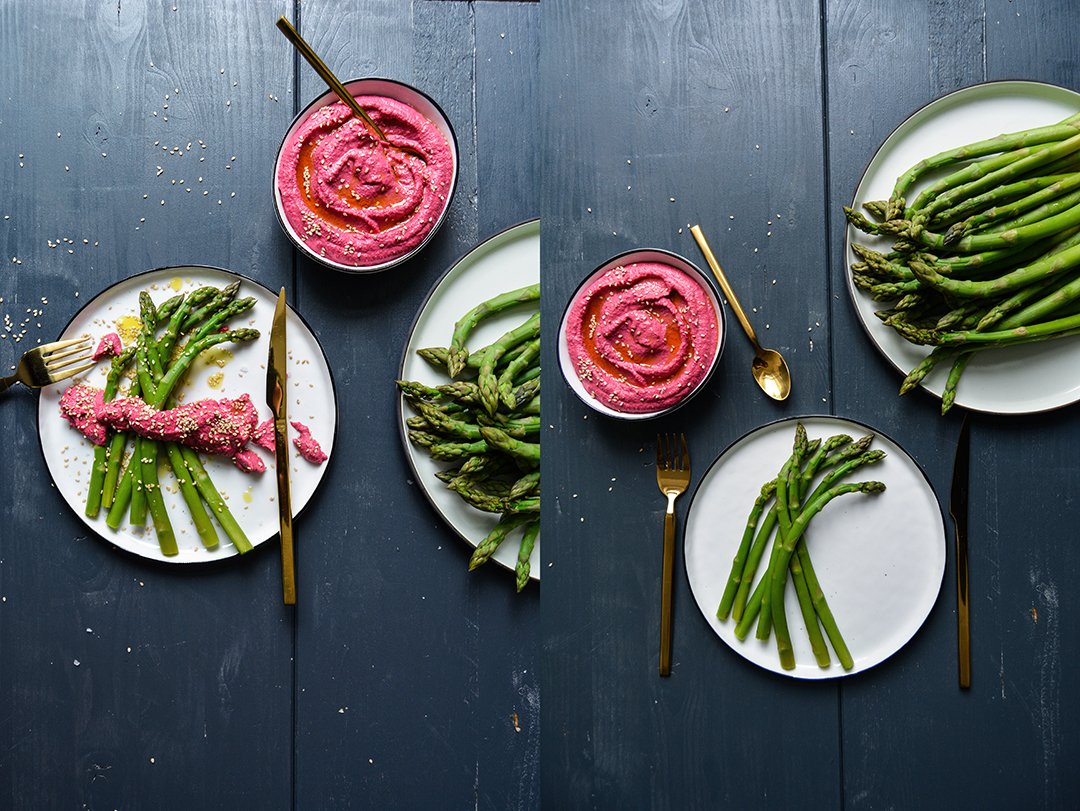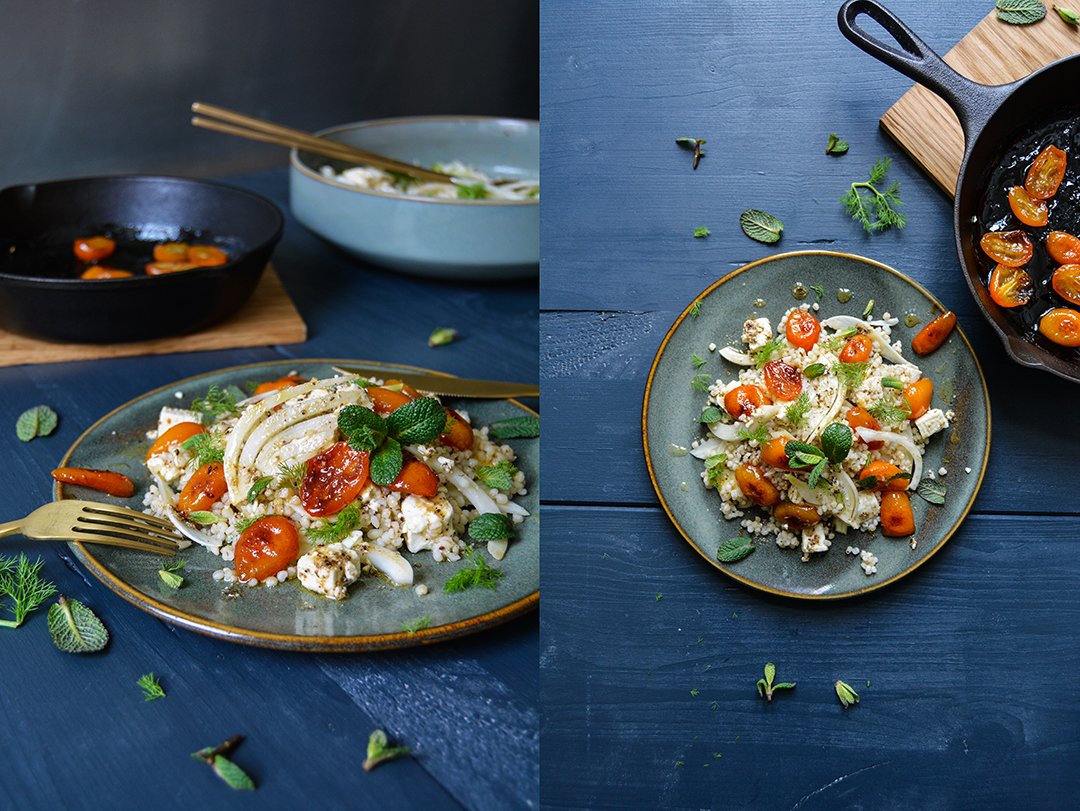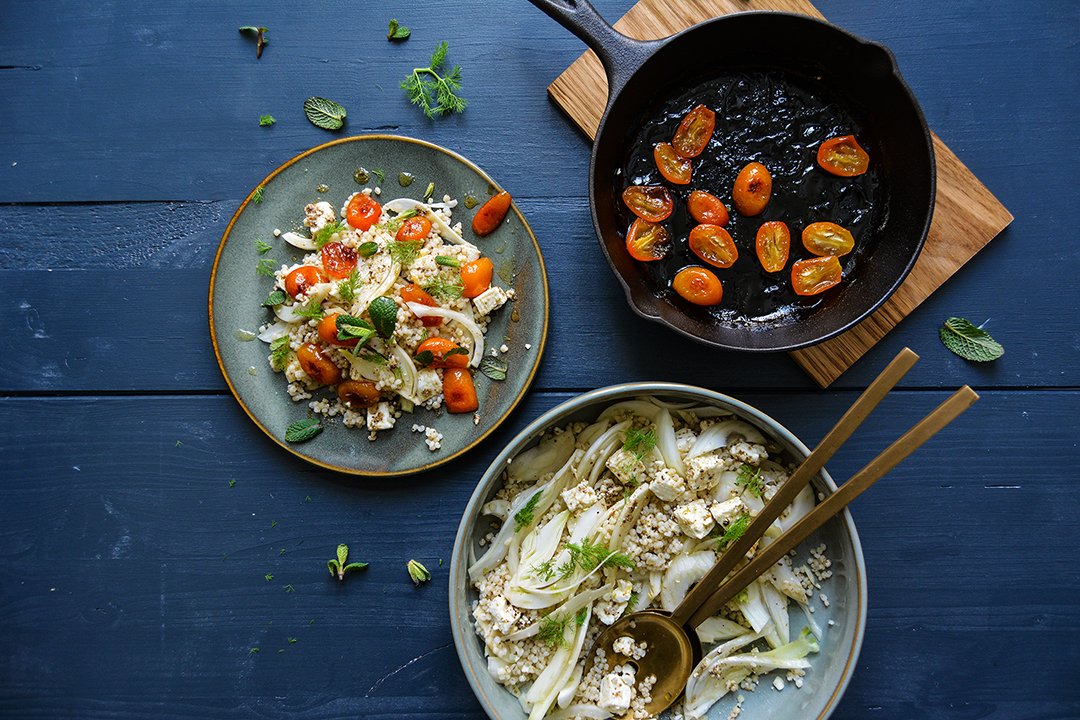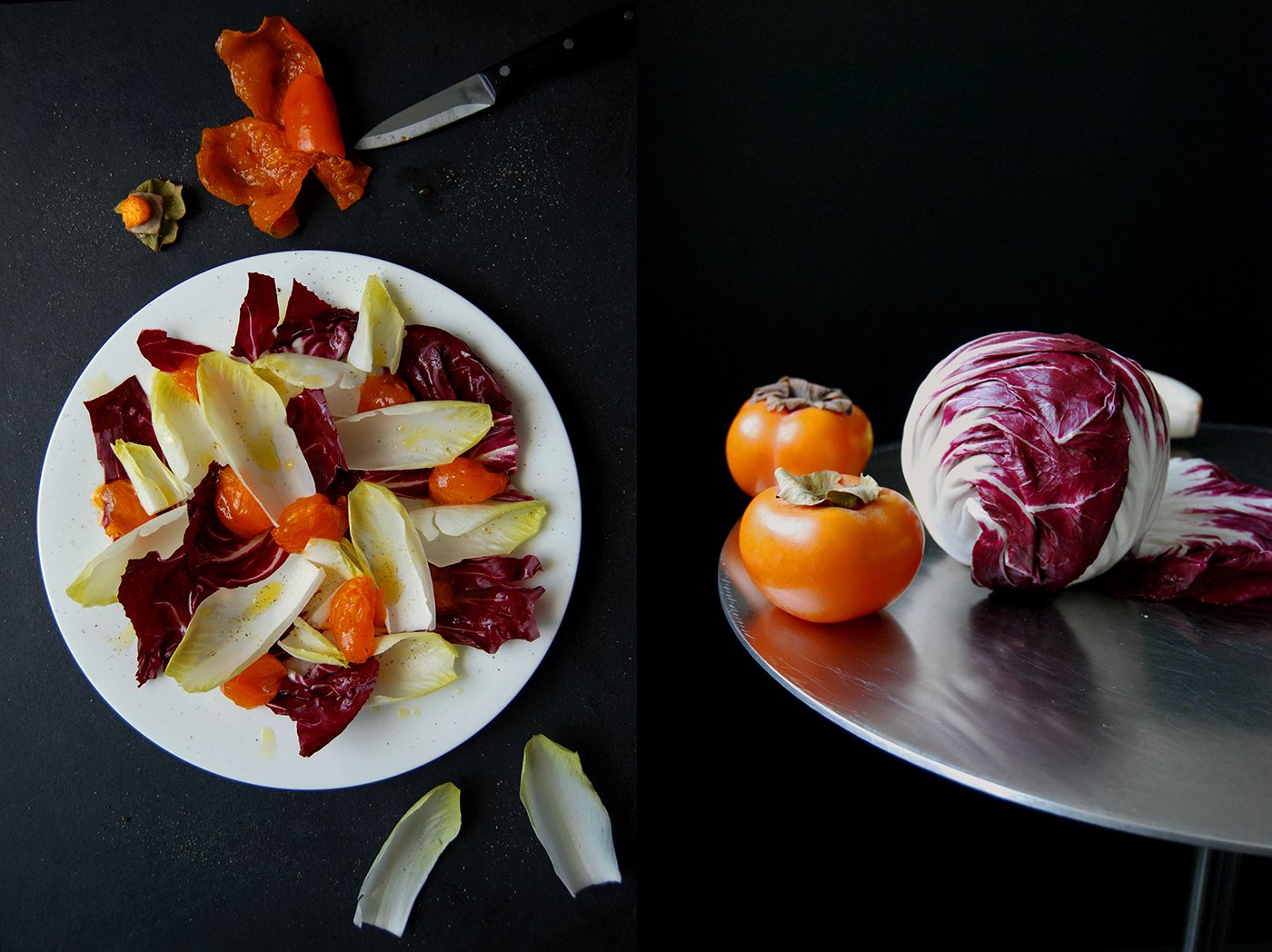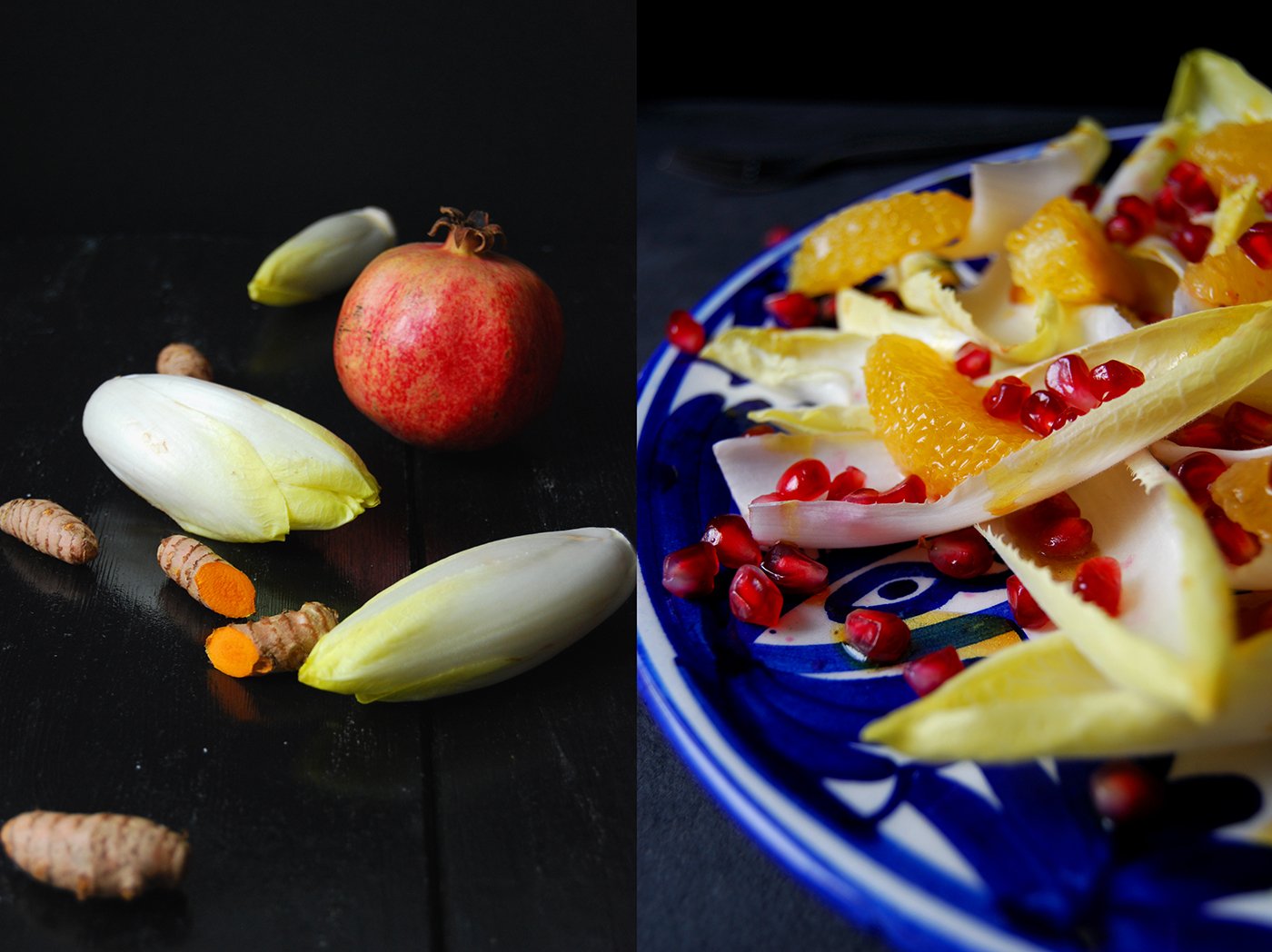BERLIN
Berlin was a party! We celebrated the German NOON at the stunning Hotel de Rome, with (lots of) champagne, with friends who came all the way from Lisbon, France, and Vienna, and with many good conversations. And we even sang at the end.
Celebrating a new book in my home city, Berlin, makes me feel both calm and very excited at the same time. I’m surrounded by my people, by my beloved city; and launching a book for the third time at Hotel de Rome, makes it feel even more like home.
So many kept offering me help, there was so much love and support that, although the launch was rather wild, it didn’t feel overwhelming for a second. Our event was set for two hours - we extended it slightly - but not even ten hours would have been enough to fit in all the conversations that I would have loved to have. About 80 guests (I lost track), the champagne kept pouring, the snacks from NOON were relished with sounds of pleasure (so much praise for the Hummus and Sauerkraut on Sourdough Bread from the book! Click here for the recipe), we didn’t even need any background music as the chatting and laughing filled the hotel’s Opera Court, a grand room in the former bank’s building (you can read more about the hotel’s history here).
Restaurateur Billy Wagner of Nobelhart & Schmutzig, no. 45 of the World’s 50 Best Restaurants, thankfully agreed to do the talk with me at our event. About two years ago, we had done a Meet in Your Kitchen feature and a podcast episode together. A few months ago, I bumped into him at an exhibition. After I had left, I was already on my bike on my way home, I thought “Billy, he’s the one for the Berlin NOON talk!.” So I quickly cycled back, asked him, still out of breath, if he’d be up for it and, luckily, he was.
When he asked me his questions in his calm Billy-way - some even unexpected, which I like - I stayed relaxed and inspired throughout the entire conversation. I think our exchange about food, noon, cookbooks, rituals, and recipes was as much fun for me as it was for our guests. Billy kept the string tight, without letting it tear - that’s a great gift to guide through a conversation.
To organize an event this big, you need partners, a team who you can trust and who trusts you too. The Hotel de Rome is not only one of Berlin’s most beautiful five-star hotels - and has the city’s most stunning roof terrace - it also has the best staff. Türkan Arikan, Director of Communications, has been a great supporter of my work since 2015 when we first met. It almost felt like love at first sight and even three books later, it hasn’t lost any of its magic.
I met Ingrid Meyer-Lohrmann, a natural networker with the biggest heart and passion for connecting people, around the same time as Türkan. Ingrid was the one who introduced me to Hotel de Rome eight years ago, and now, she brought Lallier Champagne into my life, whose delicious pink bubbles definitely lifted the crowd’s mood. Matthias Runge, the hotel’s Executive Chef, has been a fan of my recipes for years, we often chat about flavor combinations, so seeing him prepare the dishes for our event, made me feel very safe.
Today, I’m sharing one of the recipes from NOON that we also chose for the launch and that helps to slowly slip into the groove for autumn: Roasted Squash, Parsnip, and Grape Salad with Blue Cheese (recipe below).
The Berlin launch felt like a party - and I loved that. I’m quite happy that I don’t have to host a big event every week, however, when I think about it, the same rules that count for events also count for private gatherings. To be a good host, you need to feel good. You can only spread good vibes, when you feel them inside yourself. And to feel good, you need to surround yourself with the right people, you need to choose recipes that fit the occasion and to your schedule, and then it’s so much easier to stay relaxed and confident all night.
In the end, never forget, it’s your party. So accept imperfection and believe the ones around you when they offer you help. I’ve never accepted my imperfections more than I do now, I’ve never asked for help in such an honest way like I do now, I’ve never been so accepting with my own flaws. And I’ve never been so happy.
The next stops of my NOON book tour will be London on October 5th:
You can join me in conversation with Helen Goh, hosted by Hanna Geller at Building Feasts in a beautiful (secret) location (we will send you the address when you buy the ticket), with Lallier Champagne and snacks from NOON!
GET YOUR TICKET HERE and we’ll see you in London!
I want to thank everyone who made the Berlin launch of NOON possible - and so glamorous and glorious! Our guests, I loved seeing and hearing your laughters, seeing you dive deep into conversations, enjoying yourself and this night. There were just good vibes, thank you for that!
Thank you, you amazing people around me:
Türkan Arikan, General Manager Ulrich Schwer, Matthias Runge, and the entire team at Hotel de Rome, Billy Wagner, Ingrid Meyer-Lohrmann and everyone at IML Kommunikation, Champagne Lallier and Johannes Rohmer, Pia Werner and the best team at Prestel Verlag, Marcel Schwickerath, Tobias, Sira, Marta Greber for coming all the way from Lisbon (I’ll never forget that!), the four women / girl who inspired me to write NOON (Anne, her 4-year-old daughter, Gabi, and Laurel), all our guests - and Pat Appleton for singing for us before the lights went off!
Lots of love, Meike xxx
The photos taken at Hotel de Rome are by Marcel Schwickerath. The salad picture is by me.
Roasted Squash, Parsnip, and Grape Salad with Blue Cheese
from NOON: Einfache Mittagsgerichte für jeden Tag, Prestel Verlag (German)
NOON: Simple Recipes for Scrumptious Midday Meals & More, Chronicle Books (English)
Serves 2
FOR THE SALAD
12 ounces (340 g) seeded squash, preferably peeled butternut or Hokkaido with skin, cut into 1-inch (2.5 cm) wedges
6 ounces (170 g) seedless red grapes, on the vine
3 ounces (85 g) peeled parsnip, cut into wedges
¼ cup (60 ml) olive oil
Flaky sea salt
6 large radicchio leaves, torn into large pieces
8 small romaine lettuce leaves
1½ ounces (40 g) Roquefort or Stilton, crumbled (optional)
FOR THE DRESSING
3 tablespoons olive oil
2 tablespoons white balsamic vinegar
Fine sea salt
Finely ground pepper
Preheat the oven to 400°F (200°C).
For the salad, spread the squash, grapes, and parsnip on a large baking sheet, but keep them separate. Drizzle with the olive oil and gently toss to coat, again keeping the squash, grapes, and parsnip separate. Season with a little flaky sea salt and roast for 15 minutes, then gently flip the squash and parsnip over and continue roasting for 10 to 15 minutes or until the squash and parsnip are tender and the grapes start to soften. Remove from the oven and let everything cool on the baking sheet for 5 minutes.
For the dressing, whisk together the olive oil and vinegar in a small bowl and season to taste with fine sea salt and pepper.
Divide the radicchio and lettuce leaves between two large plates and layer the squash, parsnip, and grapes (on the vine or snipped) on top. Sprinkle with the Roquefort, drizzle with the dressing, and serve immediately.
To prepare the salad for transportation, let the squash, parsnip, and grapes (off the vine) cool completely, then pack in a container and spread the radicchio, lettuce leaves, and Roquefort on top. Keep the dressing separate in a jar and assemble just before lunch.
To 35 years of friendship, through thick and thin, thank you, Tobias:
NOON is OUT (and on Broadway)!
I just arrived in New York, happy and overwhelmed, on the publication day of this book that means so much to me.
Noon (and NOON) is a gift to yourself, shape that time of the day so that it fits to your own cravings. Make it yours! Use this 1 hour, or these 30 minutes, to make yourself feel good. We plan so much in our lives, every day, we just refuse to often do so when it comes to our own, our very personal needs. And we all need a break but we associate the creation of that break with even more work. So the solution is to find ways (recipes) to reduce that work and time for the preparation of our lunch so that we actually have more time for ourselves when we finally sit down; time to relax and enjoy. I hope NOON can offer you these recipes, but even more, I hope it offers you inspiration to make noon yours.
If you don’t have your copy yet, you can find all the links to order it online here, or support local and buy, or order the book from any bookstore all over world. The chapters in NOON cover Salads, Vegetables, Soups, Sandwiches, Pasta, Seafood, Meat, and Grains & Bakes - so your midday break will definitely be sorted!
Good noon! Meike xxx
The picture of me on Broadway was taken today - right after I had landed in New York - in front of Rizzoli Bookstore where I‘ll be in conversation with Hetty Lui McKinnon on Thursday, September 7th at 6pm - come join us! (For more information, click here)
If you won’t be in New York this week, but if you happen to be in London on October 5th, you can join my conversation with Helen Goh at Building Feasts, hosted by Hanna Geller, with Lallier Champagne and snacks from NOON! (For more information, click here)
Tomato and Fig Caprese & the NOON Book Tour
No other season inspires me as much as late summer. The mesmerizing abundance of vegetables and fruit in August and September never ceases to wake up my appetite and makes me want to experiment with it in my kitchen. Seeing the colorful fresh produce spread out at the stalls at the weekly farmers market in my neighborhood feels like a holiday for the eyes and the taste buds. Tomatoes in various shapes, colors, and sizes, yellow and green zucchini, bent and plump, apricots, peaches, and figs, and little berries that burst in your mouth when you pop their skins with your teeth. Red and black currants, gooseberries, and raspberries, pair them with a bunch of fresh herbs and a quick vinaigrette and you have an exciting salad ready for lunch in less than five minutes.
The classic caprese, loved and adored every summer all over the world, is kind of the mother of all simple salads. You just need juicy tomatoes, creamy burrata (or stracciatella), torn basil leaves, olive oil, balsamic vinegar, sea salt, and pepper. Replacing the usual mozzarella with burrata or stracciatella, using olive oil that’s so good that you want to lick it off your fingers, and my sea salt from Gozo, are game changers in a simple caprese. One of the most important kitchen rules is so true: the less ingredients you use, the more you have to focus on the quality of each single one of them.
A good caprese is built on ripe tomatoes, picked at their peak, and that’s the tricky part. Even in August, even the prettiest tomatoes from your trusted farmer at the market can sometimes disappoint. And if they taste bland, they won’t make your dish shine either. To avoid this, I’ve come up with various experimental caprese recipes over the years, moving away from tradition and using all sorts of fruits and roots throughout the seasons; summer’s bounty of peaches, berries, and plums, or beet, persimmon, and orange in winter.
Until now, I always refused to pair tomato with another fruit, the combinations never really satisfied me. So at first, I was hesitant when I spotted purple figs lying on my kitchen counter and considered adding them to a classic caprese. But: the result was fantastic! The figs add concentrated sweetness without distracting from the tomato’s own qualities. They just make them taste a bit sweeter, somehow, they make them taste like very ripe summer tomatoes.
It’s a kitchen hack, kind of, that I wish I had figured out before I wrote my new book, NOON. Now the book is printed so I guess I have to use this hack for the next one. But before I jump into new adventures again, I’m ready to fully enjoy seeing NOON enter the world. On September 5th (September 19th for the German book), NOON will be on the shelves of bookstores all over the world (and on sale online) - and I will go on a little NOON book tour: New York, Berlin, and London!
Before I’ll let you enjoy your tomato and fig caprese (recipe below), I’m sharing the tour dates with you and the wonderful people who I’ll be in conversations with - and a quote from an (early) starred review for NOON:
“Move over, breakfast: lunch is about to become the most important meal of the day.”
―Library Journal
If you don’t want to wait until September, you can pre-order NOON here, or support local and pre-order from your neighborhood bookstore.
NOON BOOK TOUR
NEW YORK
• September 7th, 2023, 6pm: at Rizzoli Bookstore, with Hetty Lui McKinnon, RSVP here (not required, but seating is limited and will be first come, first served)
BERLIN
• September 19th, 2023: in conversation with Billy Wagner of Nobelhart & Schmutzig (by invitation only)
LONDON
• October 5th, 2023, 7pm: at Building Feasts, with Helen Goh, hosted by Hanna Geller, ticketed event (to book a ticket, click here or email Hanna at info@buildingfeasts.com)
Thank you, Lallier Champagne, for sponsoring the NOON Book Tour!
Tomato and Fig Caprese
Serves 1
3 medium, very ripe tomatoes (preferably in various colors), sliced
2 figs, cut in half lengthwise
4 ounces / 110g burratta (or stracciatella or mozzarella di bufala)
olive oil
balsamic vinegar
flaky sea salt
ground pepper
a small handful of red or green basil leaves
Spread the tomatoes on a large plate and arrange the figs and burrata on top. Drizzle with a little olive oil and vinegar, season with a little salt and pepper, and sprinkle with basil. Enjoy immediataley!
Knoedel, Mountains and a Road Trip in South Tyrol
I went to South Tyrol for a little road trip, to sip on crisp mountain air and get lost in lush landscapes. The region’s faces change as quick as the weather, from serene soft hills to secluded villages and rugged mountain ranges. To me, no mountains are as majestic, as imposing as Northern Italy’s Dolomites. Their raw beauty makes you speechless. The French architect Le Corbusier called them “the most beautiful architectural artwork in the world.”
My expectations were high when I hopped off the plane and into my rental car. I know this region since my childhood days, this is where I used to spend my skiing holidays since I was nine years old, thanks to my stepfather who introduced my family to the picturesque village of Corvara. The food of the Dolomites, its monumental rock formations, the rustic architecture in the tiny mountain villages, all this left a deep love for this region and many marvelous memories inside me.
Although Corvara wasn’t marked on my travel map this time, I discovered new places, met so many inspiring people, and created new memories. My road trip started in Bolzano, South Tyrol’s capital, and I stayed at the newly renovated and utterly gorgeous Parkhotel Mondschein. The charming terracotta-colored Art Nouveau facade doesn’t show that the building’s oldest part dates back to 1320. The hotel is right in the medieval city center, set in a peaceful park with an almost Mediterranean vibe. The green oasis, dotted with palm trees, pretty umbrellas, and comfy sun loungers, was my first stop - for a welcome aperitivo - and my last one - for a luxurious breakfast. I could have stayed forever, chilling on the lounger, staring into the dramatic sky, and sipping on my elderflower cocktail.
So I was almost late for dinner, but Norbert Kier and his Enoteca Italia & Amore soon made me forget about my comfy lounger. It was just a short walk from my hotel, but it gave me the chance to enjoy the beauty of Bolzano’s historic center; chunky cobblestones and ice cream-colored buildings, and thunderstorm clouds that seemed ready to burst anytime - they didn’t, thankfully.
I set outside on the restaurant’s terrace, starting off with Battuta di Fassona (a beef tartare from the Fassona Piedmontese breed, which comes from Slow Food-certified Fassona cow farms), sandwiched with stracciatella di bufala, mustard, and pistachios. As I couldn’t decide which starter I should go for, Norbert also served me a Carpaccio di Fassona topped with summer truffle. Paccheri Pasta with Fish Ragù was placed in front of me next, simply divine, and so was the Quail with Swiss Chard and Lemon. I finished my lavish first dinner with Panna Cotta with Aniseed and Candied Cherries, which was so good and - as Norbert told me - it was made without gelatin, just with very rich, fatty heavy cream.
The restaurateur used to visit all Michelin 3-star restaurants around the globe every year. Norbert was always hungry for the new, for the next big thing, for the exciting. Now, he says, he’s not going anywhere anymore, now, he stays in Bolzano where he and his chef, Giuseppe Avitabile from the Amalfi Coast, want to show their guests what you can do with the region’s outstanding local produce. I’m hooked, I’ll come back.
My road trip began the next morning and reminded me that South Tyrol is so much more than breathtaking landscapes and an extraordinary cuisine. South Tyrol teaches you to listen to the silence, to breathe in, and just enjoy what nature reveals in front of you. And if you also listen to the people, to the Südtiroler (South Tyroleans), you can learn a lot about family and community, about bonds grown and tightened over generations; about traditions being lived, questioned, and sometimes readjusted.
In South Tyrol, you don’t just create for yourself, you create to preserve, or rather, you create to pass something on to the next generation. And maybe here lies the origin of the South Tyroleans’ focus on quality: they want to pass something on that has a value for the next generation. Maybe it’s pride, but also a sense of responsibility.
Right after breakfast, I left Bolzano to drive deeper into the mountains, to a farm in Partschins, close to Merano. The roots of the Oberbrunnhof date back to the 14th century. The rural farm has already been in the hands of farmer Manuel Laimer’s family for five generations. In 2004, Manuel’s grandmother passed Oberbrunnhof, its land and its traditions, on to her grandson and his wife, Caroline. Since then, the farm kept flourishing in the couple’s hands, and the family kept growing - three children guarantee that, potentially, the foundation for the next generation of farmers has been laid.
Both Caroline and Manuel stay very close to the traditions of this place; not because they have to, they do it out of free will and very passionately. Following the farm’s long breeding tradition, a herd of Tiroler Grauvieh (Tyrolean Grey), a typical Alpine cattle breed, enjoys the panoramic view from their meadows, while chickens run around them in respectful distance. Caroline affirmed that the Grauvieh is peaceful, as long as you follow farm rule no. 1: never approach a cow from its back, always from the front. The cattle is the farm’s pride, but the farm’s restaurant is what pulled me towards Oberbrunnhof.
Caroline is a home cook turned chef, she also serves and entertains her guests, treating them with traditional South Tyrolean dishes, such as Cheese Knoedel with Krautsalat (you can find her recipe at the end of this post), Brotsuppe (bread soup), Saures Rindfleisch (sour braised beef), speck and sausages from the farm, and her famous Apfelstrudel (apple strudel). The traditional spiced bread served along the dishes is baked by Manuel in a tiny room with an old wood-fired oven. The wall on one side of the room is covered with rustic wooden shelves where 200 fluffy pieces of dough, shaped into small ovals, sit and rise slowly. Once a week, Manuel starts the fire at 5am so that he can bake the little loaves at around noon.
The couple works constantly, from morning until night, there’s no holiday and no day off, but they don’t seem stressed. Life on the farm follows the family’s pace, not the other way around. It’s a lot of work, also hard physical work, but Caroline, Manuel, and their three children managed to create a very satisfying life for themselves. They don’t romanticize it, they just found their place.
You can visit the farm’s restaurant by reservation, but you can also stay for longer in their holiday cottage, Chalet Waldbrunn.
The hard part of being on a road trip is that, once you got comfortable at one place, you have to move on again. The great part of being on a road trip is that new adventures, more beauty, and more fantastic food are waiting for you at your next destination. So I hopped in my car, turned on the radio to listen to Italian pop music, and enjoyed the stunning scenery on my way to a tiny village with the poetic name Unsere Liebe Frau im Walde (Our Dear Lady in the Forest).
Unsere Liebe Frau im Walde is South Tyrol’s oldest pilgrimage site. Various legends circle around a Marian apparition in the 12th century, attracting pilgrims from near and afar since then. A Hospitium for the pilgrims was set up by monks and, with rising popularity, a Baroque church was built next to it in the 14th century. The guesthouse still exists and became a hotel at one point. The name couldn’t be more typical for SouthTyrol, it’s called Zum Hirschen (Hirsch means deer in German), yet the hidden retreat is anything but an ordinary hotel.
Run by a very charming mother-daughter-son trio, it’s a place where history is being respected, but interwoven with the needs and longings of modern travelers, searching for peace and tranquility - and for excellent food. The green hills and woods surrounding the Hirsch raise Wanderlust, two mountain lakes, Lago del Monte Luco and Lago di Tret, call for a bike ride and a refreshing swim.
Mamma and patroness Edith Kofler is the hotel’s guardian angel, guide-running the hotel with patience and a smile on her face, and with utmost trust in her children’s decisions. Ingrid and Mirko Mocatti, now the 3rd generation of hoteliers in the family, are two siblings who respectfully divide their responsibilities, but also ask each other for advice.
Ingrid is responsible for the hotel restaurant’s refined yet comforting cuisine, rooted in South Tyrol and the neighboring Trentino region. At Cervo, local ingredients and a deep knowledge of wild herbs are at the core of the menues that follow the rhythm of the seasons. In many of the young chef’s dishes, you can find traces of Hildegard von Bingen’s herbology. The famous German Benedictine abbess, an emancipated polymath, composer, philosopher, medical writer and practitioner, lived in the High Middle Ages and studied and cultivated a holistic approach to well-being.
Working with the past, but also with her own curiosity and her strong belief in the Slow-Food movement, Ingrid creates drinks and dishes that nourish the body and the soul. Her fir needle lemonade, served at my arrival, felt like a hug; her stunning Onsen Egg with Herb Salad and Potatoes was a traditional yet at the same time modern culinary interpretation of a walk through the woods (and yes, you can eat baby fir cones).
Nature’s generous in South Tyrol, you just have to keep your eyes open. And that’s what Ingrid does. Nettles are turned into tagliolini with deer ragù, a fir needle-herb oil refines the creamy Bergwiesenschaumsuppe (mountain meadow soup) with smoked mountain char, meat and grains come from local producers, traditional farmers and mills. And the dessert of Topfenknoedel (ricotta dumpling), to finish off my divine dinner, made my heart jump.
With virtuosity and a clear, calm vision, Ingrid manages to incorporate the values of this historic place in her cooking. Her brother, Mirko, manages to translate these same values - in a very pure and simple form - into the hotel’s honest philosophy; he lets the values manifest themselves in modern design and architecture that respect the past, but aren’t put in chains by it. Every detail, every material, every piece of furniture is chosen responsibly and sensitively; every decision, every change is made with imperturbable trust, respect, and confidence.
The people who are shaping Zum Hirschen bring in so much of themselves, of their own character, so much love, passion, and devotion, that by doing so, they give this place a soul. It truly is a place that calms you down, there’s an ease that you can feel here; through nature’s beauty, through the clarity and serenity of the rooms, and through the food that tastes so good and makes you feel so good. In that respect, Zum Hirschen is still a Hospitium, staying true “to the ancient Greco-Roman concept of hospitality as a divine right of the guest and a divine duty of the host.”
Although Papà Giorgio stays more in the background, his wise words don’t:
“Inspiration is essential for every creative soul. Just like the sun, that’s breaking through the forest’s darkness, brings light, so does inspiration bring light to life. Here, in the secluded Val di Non Valley, I find strength and inspiration, time and again.”
The Dolomites are majestic, they seem out of reach, but you can get close to them, even without having to climb. The Seiser Alm is the perfect choice if you want to feel like an alpinist for a day - but without up-sailing. I wore my sneakers and a sunhat and was ready for a relaxed summery hike, past the imposing landmark Schlern (2.564 m / 8,412 ft) that looks like the bow of a ship, and towards the mountain range Marmolata - the “Queen of the Dolomites” (3.343 m / 10,968 ft). Their peaks seem to cut right through the clouds.
My desire to climb the queen was limited, my appetite for lunch was stronger. The open plateau of Seiser Alm is the largest high-altitude Alpine meadow in Europe, a blooming attraction in summer, turning into a winter wonderland as soon as the first snowflakes start to fall. On the culinary side, the mountain pasture offers romantic mountain hut vibes to dive into rustic mountain cuisine.
I visited Franz Mulser’s Gostner Schwaige, a 350-year old Berghütte (mountain hut) that couldn’t be any prettier in a fairytale. I was prepared for a frugal merende (lunch snack) of speck, cheese, and Schüttelbrot (crunchy spiced mountain flatbread) but the farmer, cheese maker, chef, and proprietor of the picturesque hut - he owns it since he was 21 years old and left his carrier in Michelin-starred restaurants behind - had different plans. I was presented a South Tyrolean feast!
Franz extended the humble merende into a lavish lunch of a spectacular Heusuppe (hay soup, which is really made of hay and flowers and also tastes like it) and Schlutzkrapfen (Tyrolean dumplings made with carob flour and filled with Alpine cheese fondue). The Kaiserschmarrn that followed was the best I’ve ever had (there’s a recipe for this torn pancake on the blog, click here).
Making cheese has long been a tradition in Franz’s family and also at Gostner Schwaige. Since its early days, the hut had been used for making cheese, and the recipe for Franz’s Tiroler Graukäse (grey cheese, rennet-free and very low in fat) dates back to these days. Whenever the temperatures are warm enough, the cattle grazes on the Alm’s meadows. However, cows are temperature-sensitive. When it’s too cold, they get stressed - I feel with them - releasing stress hormones, which would also harm the final cheese.
Franz strongly believes in the quality of the raw product, in the milk. He knows that only good milk can make good cheese. So it’s his job to make sure that his cattle stays happy and the milk quality stays constant. And then, according to the seasons, the flavor of the grass changes, the flavor of the milk changes, and so do the flavors and textures of the cheeses that he produces change. For him, tradition means to preserve the old, by using new knowledge and experiences, to gently guide tradition into the future. In his case, that’s a very tasty endeavor.
My trip came to an end, not a sad end, but one that left me filled with new memories and lots of inspiration. Before I checked in my last hotel, I visited the natural wine makers Carmen and Hannes Röck at their winery, Weingut Röck, for a spontaneous wine tasting. The siblings took over production from their father a few years ago, shifting from conventional to low-intervention wine making. They still work within their family tradition, but just like the other chefs, farmers, cheese makers, and hoteliers who I met, they had the freedom to find their own path. Their wines are outstanding and they taste the way they taste because Carmen and Hannes create and shape them. Passing on an established business from one generation to the next is never easy. It’s a story of letting go, of fears, of being brave and reckless sometimes, but first and foremost, it’s a story about trust.
The stunning Ansitz Fonteklaus, solid like a rock since 1706 and first mentioned in 1317, looks like a fortress and makes you feel like you found the safest place on earth. The hotel offers marvelous views, the prettiest rooms, and a gorgeous (and crystal clear) infinity swimming pond - which I had to share with two tiny frogs, but they didn’t seem to mind my presence. There were even more traditional South Tyrolean treats on the table for my last dinner at the hotel’s restaurant, cooked by chef Andreas. I happily indulged in them, and in the starry sky, before I slept as peaceful as a baby.
Thank you, Caroline, Manuel, Edith, Ingrid, Mirko, Giorgio, Franz, Norbert, Giuseppe, Carmen, Hannes, Erich, everyone at Parkhotel Mondschein, Zum Hirschen, and at Anistz Fonteklaus - all of you made this magical trip happen!
This post has been sponsored by Visit South Tyrol. The people and places featured in this post were chosen by me, the opinions are my own. Thank you, Dagmar, for helping me put this unforgettable road trip together!
Caroline’s South Tyrolean Cheese Knoedel with Krautsalat
by Caroline Laimer
For the knoedel
You can prepare the knoedel mixture a day in advance and keep it in the fridge. You can also shape the knoedel and freeze them, either cooked or uncooked (and cook them after defrosting them).
Makes 20 knoedel
80g / 3 ounces unsalted butter
70g / 2 1/2 ounces onions, finely diced
500g / 17 1/2 ounces stale white bread (about 1-2 days old, hard rind removed), cut into small cubes
400g / 14 ounces mixed aromatic hard cheese, grated (you can also add a little gorgonzola)
300 ml / 1 1/4 cups whole milk
20g fresh parsley leaves, chopped
sea salt
ground pepper
6 large eggs
dried breadcrumbs, for sprinkling the baking sheet
In a large pan, heat the butter over medium heat and cook the onions, stirring occasionally, for about 15 minutes or until golden and soft; transfer the onions to a medium bowl and let cool for 5 minutes.
In a large bowl, mix together the bread, cheese, onions, milk, and parsley, then season to taste with salt and pepper, add the eggs, and mix with your hands until very well combined.
Line a baking sheet with parchment paper and sprinkle with dried breadcrumbs.
Wet your hands and shape the knoedel mixture into 20 large round knoedel, rolling them between your hands and gently pressing the mixture together, then transfer the knoedel to the prepared baking sheet.
In 2 large pots, bring salted water to a boil then add the knoedel, reduce the heat to a gentle boil, and cook for about 10 minutes, or until the knoedel are firm and cooked through. Using a slotted ladle, transfer the knoedel to a sieve and drain for a minute.
For the krautsalat
Serves 2
1 large handful very thinly sliced or shredded green cabbage
caraway seeds
sea salt
sunflower oil or rapeseed oil (mild flavor)
white wine vinegar
ground pepper
In a medium bowl, sprinkle the cabbage with 1/4 teaspoon of caraway seeds and 1/4 teaspoon of salt then mix well with your hands and let sit for 10 minutes. Season to taste with oil, vinegar, caraway seeds, salt, and pepper.
Spread some krautsalat on a plate, arrange 1-2 knoedel on top, and enjoy while the knoedel are warm.
Summer Panzanella
I fell in love with panzanella when I was about five or six years old. We used to spend our summers in Tuscany, in a tiny old town close to Lucca. These holidays sparked my forever longing for the Mediterranean, for its pure and simple way of cooking, and for salads made with old bread. The taste of stale bread, soaking up the oily juices of a dark vinaigrette, tossed with deep red, ripe tomatoes and fleshy basil leaves became a memory so strong that it shaped my palate and my future cooking as an adult.
It was then that, without consciously noticing, I understood that a handful of good produce and products can create magic on a plate. It wasn’t luxurious, it was frugal, it wasn’t labor-intensive, it was very easy to prepare. And it was adventurous: I picked the tomatoes together with my Mama from the vegetable garden behind the house where we stayed. The garden, picking vegetables under the burning hot Italian sun, using old/ stale bread and not wasting it, preparing the dish together with my mother, bare-footed on clay tiles, setting the table with colorful, heavy Tuscan ceramics - all this became me, as a cook and as a person.
Now, you can find theses ceramics in my kitchen in Berlin, and although I don’t have a vegetable garden, my cooking is still very much produce-based and circling around comforting and frugal dishes (more and more even these days). And my love for panzanella is unbroken, as strong as ever.
So during our holidays in Tuscany, we ate the basic version with tomatoes and basil almost every day. Over the years, I’ve tried other recipes, with fish and seafood even, but I find that bread salads focussing on fresh vegetables excite me the most. I also like to add fruit sometimes. I even have three panzanella recipes in my book 365, with cherries and Stilton, one with berries and bacon (you can find the link below), and there will be a couple more in my new book NOON (not the one I’m sharing today).
Very often (when I’m not working on a cookbook), I don’t plan the recipe in advance but just look in my fridge and on the kitchen counter and then decide what kind of panzanella I’ll throw together. Just leftovers, staying frugal, and true to its core.
So when I had a loaf of sourdough bread lying around, slowly losing its sponginess (I never use completely stale bread for my panzanella, as you’d have to soak it in water first, which I don’t like), I knew what I would turn that into. Crisp leaves of radicchio and red Belgian endive - yellow endive works just as well but I love the drama that the red one adds - bring in a bitter note, green peas and ripe strawberries make it sweet and juicy. Stilton would have fit too (it always fits) but there was none in the fridge, so I went back to my panzanella roots: work with what you have right in front of you.
Here’s the recipe for my Berry and Bacon Panzanella with Rosemary.
MY NEW BOOK
NOON: Simple Recipes for Scrumptious Midday Meals and More
ON SALE SEPTEMBER 2023
YOU CAN PRE-ORDER NOON HERE
Support local: pre-order from your neighborhood bookstore
Summer Panzanella
Serves 1
For the salad
1 small handful fresh or frozen peas
3 large radicchio leaves, torn
1 red or yellow Belgian endive, leaves separated
8 ripe strawberries, hulled and cut in half
1 large, thick slice of white bread (ideally sourdough bread), cut into chunky cubes
For the dressing
3 tablespoons olive oil
1 tablespoon balsamic vinegar
1 tablespoon white balsamic vinegar
fine sea salt
ground pepper
For the salad, bring salted winter in a small saucepan to a boil and blanch the peas for 1 minute. Drain the peas, briefly rinse with cold water, and let them cool for 2 minutes then set aside.
For the dressing, whisk together the olive oil and both vinegars in a small bowl and season to taste with salt and pepper.
On a large plate or platter, layer the radicchio leaves, the whole Belgian endive leaves, strawberries, bread, and peas. Drizzle with the dressing and enjoy immediately (which I do) or let it soak for 15 minutes.
Asparagus, Beans & Burrata with Lemon
One of the most satisfying experiences for me as a cook is using the ingredients that I have right on hand in my kitchen and whatever fresh produce is in the fridge and on the counter and then spontaneously turning these finds into an utterly scrumptious dish. No planning, no overthinking, just playing around with what I have right in front of me. That’s pure joy, creativity, and improvisation, but also frugal efficiency. This is my favorite way of cooking at the moment, especially around noon.
With a dish in mind that I enjoyed in Rome a while back - burrata, olive oil, and a generous amount of lemon zest - I only had to add a few handfuls of asparagus, beans, and peas from my fridge, blanch them first (crisp and al dente, not soft!) to turn this Roman starter into a proper meal. A plate full of vegetables (or fruit even), crowned with creamy burrata and freshened up with lemon is quick to prepare and tempting for lunch and dinner. Although this dish would have perfectly fit into my soon (kind of) to be published 3rd book, this recipe won’t be in there. I just came up with it now, but it captures the vibe of my new book NOON better than any words can possibly do. So I’m sharing it with you here on the blog to show you what this book is about and why it was and still is such joy to work on it (I’m currently finishing the German translation).
NOON is about simple recipes that are fun to prepare and to eat. It’s about food that makes our mind, soul, and body happy; food that is nourishing and comforting and that gives us energy for the rest of the day. However, while it pleases the body, there’s no reason why our lunchtime shouldn’t be just as exciting as our dinner.
“As someone who eschews breakfast and counts down the hours to lunch, NOON is right up my proverbial alley. Peters’s recipes showcase the power of food to excite, to create a mood, or to transform a situation as much as to nourish the body. The joy of a midday feast is something within our reach with this beautiful book.”
―Helen Goh, co-author of Sweet
When I started writing NOON in January 2022, I noticed that midday is the time of the day when I focus on my own needs rather than thinking about what I’d love to cook for and share with others. This makes lunch, the preparation but also indulging in it, the ultimate form of self-care. It’s a break that gives us time for ourselves and our own needs. Every day. That’s a great gift.
The 115 recipes in the book circle very much around vegetables but there are also meat and seafood dishes. What they all have in common is that they are colorful, with layers of flavors and texture, sometimes they surprise with an unusual combination, or with tips and tricks to make our midday break tastier yet not fussier. The recipes in NOON help put a spotlight onto a meal that is often neglected in our busy schedules.
And we have a cover! I’m in love with it and with the recipe that we chose for it: Ada’s pink Polish Chłodnik Soup.
NOON will be out on September 5th in English (published by Chronicle Books) and on September 20th in German (published by Prestel, luckily, with the same title). If you’re as excited about it as I am, it would be great and very helpful if you pre-order, you can find the links here or pre-order worldwide at your local bookstore. These days, with shifts and changes in the publishing world, book pre-orders have become essential for authors. So your help and support has a great impact on the book and which course its journey will take, even before it’s been published.
“Meike Peters’s NOON is a delicious contemplation of how food can bring pleasure and comfort any time of the day. Her vibrant vegetable- and fruit-packed recipes are colorful, enticing, crave-worthy, and completely doable at lunchtime. Peters’s book serves as a reminder that we should all aim to bring balance to our busy days and savor the small moments around this oft-forgotten meal.”
―Hetty Lui McKinnon, food writer and cookbook author
In September / October I will be on a NOON book tour (you can find updates about the tour here). In New York you can join me for a talk with Hetty McKinnon at Rizzoli Bookstore and in London I’ll have a ticketed event at Hanna Geller’s Building Feasts with a conversation with Helen Goh (tickets will be available soon). Before I’ll let you enjoy today’s recipe of Asparagus, Beans, and Burrata with Lemon, I will share a little more about NOON with you. I already wrote about it in a previous post (you can read it here), but this book came with a lesson:
When I had the unexpected idea - or rather the complete vision for NOON within a few days - I had no publishing deal yet and the early feedback to my idea was rather hesitant. I was told that people want cookbooks for dinner, not for lunch. But somehow my instinct strongly told me to stubbornly move on with it and not change a thing. So I started cooking and taking pictures and did nothing but this for about two months. Only a week before I was done shooting the recipes, I got a little nervous and started talking to publishers again.
Long story short: all of a sudden I kept getting offers but most luckily, my editor of my first two books, Holly La Due, picked up on the idea. Now editorial director at Princeton Architectural Press, whose cookbook department had just become a part of Chronicle Books, Holly pitched NOON to Chronicle for the fall of 2023 (usually this would be far too tight but I was impatient and wanted it out as soon as possible). Serendipitously, Chronicle jumped on the idea of a lunch book and, as another book had just dropped out of their program, NOON took its place, scheduled for the fall of 2023.
When I got the message from Holly on March 26th 2022, two months after I had first shared my idea with her, I had no idea that from then on, everything would smoothly fall into place. Sometimes we really have to sit back and wait and do nothing - or just cook recipes and take pictures of them anyway - and everything will come together exactly how it should. It’s so easy to say though once we know how the story turned out and so hard to do while we have nothing but our gut feeling.
Thank you for following my book journey for the 3rd time!
Meike xxx
NOON: Simple Recipes for Scrumptious Midday Meals and More
YOU CAN PRE-ORDER NOON HERE
Support local: pre-order from your neighborhood bookstore
Asparagus, Beans and Burrata with Lemon
The vegetables don’t need to be warm so you can prepare them in advance. You can even keep them in then fridge overnight and assemble right before you want to enjoy your lunch.
Feel free to adapt this recipe to the seasons, thinking of juicy fruit and bitter radicchio or raw fennel in summer or early autumn.
Serves 1
2 white or green asparagus stalks, trimmed
1 small handful green beans
1 small handful flat beans
1 small handful fresh or frozen peas
110g / 4 ounces burrata or mozzarella di bufala
olive oil
freshly grated lemon zest
freshly squeezed lemon juice (about 1/2 large lemon)
flaky sea salt
black pepper
ciabatta or baguette, for serving
Peel the white asparagus; green asparagus only needs to be trimmed.
Bring a large pot of salted water to a boil and blanch the white asparagus for about 7 minutes or until al dente (green asparagus needs about 3 minutes). Leave the pot on the heat and, using a slotted ladle, transfer the asparagus to a colander then briefly rinse with cold water and drain; cut each asparagus into 3 pieces and set aside.
Add the green beans and flat beans to the pot with the boiling water and blanch for 4 to 6 minutes or until al dente. Leave the pot on the heat and, using a slotted ladle, transfer the beans to a colander then briefly rinse with cold water and drain; cut the beans in half, or into smaller pieces if you prefer, and set aside.
Add the peas to the pot with the boiling water and blanch for 1 minute then drain and briefly rinse with cold water.
Arrange the asparagus, beans, and peas on a large plate. Place the burrata on top of the vegetables then drizzle the vegetables and burrata with olive oil and lemon juice (be generous with the lemon juice). Generously sprinkle with lemon zest, season to taste with salt and pepper, and enjoy immediately with thick slices of ciabatta or baguette to dip into the oily juices.
Meet In Your Kitchen | Krautkopf's Roasted Kale, Apples and Potatoes
This post is part of my Meet in My Kitchen podcast: How did we get to where we are in life & what does food have to do with it
"It's really the story of simplicity. You can create great taste with just a few really good ingredients. You won’t need much." - Susann Probst
When I hopped onto the empty platform after a 2.5 hour train ride I found myself in front of an old red brick building with broken windows and a faded sign painted over the door. I smiled as I thought of the last sentence I had written to Susann Probst and Yannic Schon of Krautkopf"If you won't manage to pick me up in time, don't worry, I'll walk around in the village." There was no village.
The first Meet in My Kitchen Podcast On Tour took me right into the picturesque countryside of Mecklenburg Vorpommern (Mecklenburg-Western Pomerania) in the north-east of Germany. Golden hills draw their rolling lines into the landscape right where the cloudy sky begins, old trees frame the endless alleys, and villages are rare. This is the place that a young couple chose as their new home, after 10 years in Berlin building up one of Germany's most successful food blogs, publishing a cookbook, and releasing a recipe app.
An old post-war Siedlerhaus (settlers house) rustically built in 1948 out of leftover bricks and beams, compiling of a barn, a couple rooms, and a vast amount of land made Susann and Yannic fall in love with a region that couldn't be more of a contrast to buzzing life in Berlin. However, exactly that - and the creative potential of the two old buildings and the huge garden - were the reason why they both felt ready for a new chapter in their life.
"You see what is in season just because that’s how you planted it. There was all this creativity happening, you went outside and looked into your harvesting basket or in general, you looked at the plants and what was going on there." - Yannic Schon
The Krautkopf cosmos is the inspiring symbiosis of two minds, well attuned, who express themselves through photography, food, design, and now also gardening. Susann and Yannic found a new playing field for their creative energies initiated through the big move in 2020.
The house's interior brings together warm hues, all shades of earthy colors, it plays harmonically with darkness and light, and it treasures all the old features. The dining room feels like a cozy cave, the kitchen, which used to be the barn, still has the old uneven brick flooring, the little lattice windows letting in beams of light. It wouldn't really surprise you if you saw a sheep munching on hay next to you. It's all very rustic but then at the same time it doesn't have the dusty layer of the past covering up the fact that it's 2021. It's minimalist and modern without neglecting the past, here, the presence lovingly embraces the past.
Susann and Yannic always keep all creative decisions in their own hands, be it a blog, a book, a sofa, or the new field of gardening. They read and learned everything they could possibly find about seeds and seedlings, flowers and orchard meadows, bees and bushes. The couple created a garden that combines all the romantic ideas of living in the countryside with the modern desire of a sustainable life with nature and not against it. The huge vegetable garden offers every ingredient a cook could ask for. Tomatoes, zucchini, squash, peppers, peas, beans, and potatoes - all popping when their season has come. There's really everything right at hand in front of the kitchen door that a cook could ask for - and it all looks so perfect and pretty.
When Susann and Yannic worked on their new book, Erde, Salz und Glut (soil, salt and heat; only in German) they just had to walk into their garden to create all the colorful recipes circling around vegetables that fill their book's pages. The concept for the book came up during a trip to Scotland. Living in a tent and reducing ingredients, tools, and techniques to a minimum for their travel cooking, the ingredients basically only needed salt and heat. When they moved to their new house shortly after the trip and when gardening and harvesting became such a big part of their everyday life, they added 'soil' to the book's title.
The recipe they shared with me is from their new book. It's a celebration of their garden and of their favorite season, of autumn, its flavors and its colors: Roasted Kale, Potatoes and Apple.
The podcast episode with Susann and Yannic is in German. You can listen to the Meet in My Kitchen podcast on all common podcast platforms; there are English and German episodes. You can find all the blog posts about these podcast episodes including my guests’ recipes here on the blog under Meet in Your Kitchen.
Listen to the podcast episode with Susann and Yannic on:
Spotify / Apple / Deezer / Google / Amazon / Podimo
On Instagram you can follow the podcast @meetinmykitchenpodcast!
Roasted Kale, Potatoes and Apple
by Susann Probst and Yannic Schon (from Erde, Salz & Glut)
Serves 2
700g / 1 1/2 pounds small waxy potatoes (with skin)
2 tablespoons vegetable oil
1 medium red onion, peeled
2 medium baking apples
100g / 3 1/2 ounces kale
1 handful walnut kernels
Salt
2 tablespoons walnut oil
1 tablespoon mustard
70ml / 1/4 cup plus 1 teaspoon apple juice
4 medium sprigs tarragon
Preheat the oven to 180°C / 355°F.
Cut the potatoes into 4 wedges each. Drizzle 1 tablespoon of the vegetable oil on a baking sheet, add the potatoes, toss them in the oil and spread them out. Roast the potatoes, on the middle rack, for 10 minutes.
While the potatoes are roasting, cut the onion into slim wedges, cut each apple into 8 wedges then cut out and remove the core. Trim the kale leaves and tear large leaves into smaller pieces. Chop the walnuts roughly.
Add the onion, apples, and kale to the potatoes, add 1 tablespoon of vegetable oil, mix with your hands, and season to taste with salt then bake for another 15 minutes or until the potatoes are golden and just cooked through. Add the walnuts and roast for 1 more minute.
In a small bowl, whisk together the walnut oil, mustard, and apple juice and season to taste with salt. Remove the tarragon leaves from the sprigs then drizzle the dressing over the roasted vegetables and sprinkle with the tarragon. Serve immediately.
Meet In Your Kitchen | Moritz, Switzerland & the Grill Royal Family
This post is part of my Meet in My Kitchen podcast: How did we get to where we are in life & what does food have to do with it
"Food is probably the most important thing for me besides breathing. But I guess sex is also pretty important." - Moritz Estermann
When you grow up in the Swiss Prealps and you find your peace with the fact that you live in a tiny village only surrounded by nature, then Switzerland is the best place to live in. However, if at one point you want to know what there is on the other side of the mountains, you have a problem. Then you have to leave.
Moritz Estermann liked his life, tightly woven into a safe net of family, friends, and Swiss food. During the week he would play in the neighbors' fields and barns, the weekends would be all about walks in the mountains together with his parents and brother. And when he could tell his father the names of 20 flowers he would get French Fries in one of the mountain huts. Moritz doesn't want to make it sound like Sound of Music - but it does.
But one day, the Swiss fairy tale ended and Moritz left the mountains behind to move to Berlin. And as he arrived, walking down Strasse der Pariser Kommune lined with its very vertical, very unadorned socialist buildings, he felt home and ready for a new chapter.
"We started at Pauly Bar, moved on to the Grill (Royal) then we went to King Size Bar at 1 at night and left at 6 in the morning, staggering. But I had to be back in the office at 9:30, often working on bookkeeping. It was an absolutely amazing time, I learnt everything this business is about, but you shouldn’t do this. You get bogged down. It’s too much. Your own life falls by the wayside. Completely." - Moritz Estermann
Grill Royal, Kin Dee, Bar Freundschaft, Dottir - Moritz Estermann's name appears behind many raisins in Berlin's gastronomic cake but the man himself stayed a mystery for me for a long time. I had been wanting to meet him for years and it had to happen during a long and tipsy night out at Bar Freundschaft. Introduced by Susan Choi, and soon rebuked by Moritz as I told the sommelier "I'm sure you don't have pastis," the first sentence Moritz ever said to me was: "Don't be so negative!." I felt like a little girl, but he was right, and I got my drink in the end.
So how does a Swiss boy end up in the 'Grill Royal family' at quite a young age? He's not only supervising some of the 'family's' places, but he's also Stephan Landwehr's and Boris Radczun's - the founding fathers - copartner in a few endeavors. How does he start new projects and each and every single one is a success? The answer is very Swiss: Moritz says he understands restaurants and he understands Berlin.
But there's more behind this humble Swiss mind. Moritz has a great connection to his instinct and he completely trusts this instinct. I've seen this talent in the characters of all the people I'm talking to for the Meet in My Kitchen podcast. They can all hear their inner voice and learnt to always listen to it. Moritz instinctively goes to the right places, connects with the right people, feels the inspiration, and then picks up the right projects. It's not luck, his success rate is too good for that. It's a very clear focus on what makes sense and then hard work and discipline to get there.
What I love about people in the gastronomic world is that despite this discipline, they never miss the party. What I love about Moritz on top of this is that he wants to create places that make his customers happy but he also wants to create places where his employees are just as happy to work at. He is part of a new movement of restaurateurs who break with the old system. Yes, he wants to and he has to create profitable places, but that doesn't mean you have to exploit the ones who work for you. It's a new feeling of responsibility, and also awareness, that no matter what your job is, you can always make a difference within your everyday operating range.
"I’m not sure if I really trust the universe or if I am, and was, simply naive, but I was never scared of the world outside. I believe it’s a great privilege, growing up in an environment where fear doesn’t exist, simply not being forced to confront it and learning to live with it." - Moritz Estermann
Moritz pays a lot of attention to the people around him. And he pays the same attention when it comes to his food and cooking at home. He shared his current favorite recipe with me, Pappa al Pomodoro. This frugal Italian dish is made with just a few ingredients and that's the reason why each of them should be of exceptional quality. It reminded me a lot of Panzanella - a Tuscan bread salad - yet the stale bread is soaked in tomato sauce and not in vinaigrette and water. Officially it's a thick soup, eaten warm or cold. Roughly chopped sun-kissed heirloom tomatoes, fantastic sourdough bread with a dark crust, the finest olive oil, and a very simple yet very tasty tomato sauce make you forget about frugality and simply indulge in a very fruity, surprisingly light, summery lunch that takes you right to the soft hilltops of Tuscany.
The podcast episode with Moritz Estermann is in German. You can listen to the Meet in My Kitchen podcast on all common podcast platforms; there are English and German episodes. You can find all the blog posts about these podcast episodes including my guests’ recipes here on the blog under Meet in Your Kitchen.
Listen to the podcast episode with Moritz on:
Spotify / Apple / Deezer / Google / Amazon / Podimo
On Instagram you can follow the podcast @meetinmykitchenpodcast!
Pappa al Pomodoro
by Moritz Estermann
Serves 2
For the tomato sauce
350ml / 1 1/2 cups tomato passata
3 large cloves of garlic, finely chopped
Olive oil
Fine sea salt
Black pepper, freshly ground
For the Pappa al Pomodoro
Around 1/3 of a 750g / 1 2/3 pound loaf of stale white sourdough bread (with crust, the weight of the stale bread is roughly 225g / 1/2 pound)*
Olive oil (the best you can afford)
Around 450g / 1 pound ripe tomatoes (organic, heirloom, ideally various types)*
1 large handful fresh basil leaves, torn
Freshly squeezed lemon juice, to taste (optionally)
* The ratio of fresh tomatoes to bread should be roughly 2:1
Preheat the oven to 160°C / 325°F (preferably convection setting).
For the tomato sauce, add the passata, garlic, and a dash of olive oil to a medium saucepan, season to taste with salt and pepper then bring to a boil, reduce the heat, and simmer for about 20 minutes. The sauce should be light red and runny, not thick, and taste fruity; season to taste with salt and pepper.
Tear the bread into bite-sized pieces, spread on a large baking sheet, and drizzle with a little olive oil. Toast the bread in the oven until crispy but not dark. Transfer the warm bread to a large bowl and add the tomato sauce. The bread should be well covered in sauce and soak it all up but it shouldn’t swim in the sauce; let it sit for at least 5 minutes, the bread should have soft parts and parts that are still a little firm.
Cut the tomatoes into bite-sized pieces. Add the fresh tomatoes and basil to the bowl with the soaked bread, season to taste with salt, pepper, and a squeeze of lemon then gently and briefly mix with your hands; it should be chunky, not mushy.
Enjoy immediately!
Rhubarb and Cucumber Caprese
After months of calming my mind and palate with familiar comfort dishes - creating a soothing counterpart to the uncertainties in the world - I suddenly feel a growing appetite for kitchen experiments again. Pizza, spaghetti Bolognese, German stews and roasts, and yes, baking sourdough bread, gave me comfort and safety while the world turned upside down and pulled me off my feet. But I recently started to feel curious and hungry again, searching and finding a refreshing caprese salad with pickled rhubarb, orange blossom water, cucumber, mozzarella di bufala and mint.
As I leaved through Marc Diacono's fabulous new book, Sour, which was nominated for a James Beard Award this year, I immediately stopped on page 147 as I spotted a vibrant pink Rhubarb and Radish Salad. Marc uses raw rhubarb that he cuts very thinly and marinates in rose water. That made me think. I always cook, bake or roast rhubarb and wasn't quite sure if I'd fall in love with its distinct taste and texture when raw. The British cookbook author adds blue cheese and dill and this, in combination with the rose water, wraps it up snugly. It's sour, it's bold and somehow harmonic, or in Marc's words: "The rose water sets everything off and encourages the radish and rhubarb to sit a little closer together while retaining their independence."
So I asked myself, would that also work with orange blossom water? And what about quickly pickling the rhubarb first and adding crisp cucumber and a hint of fresh mint? I find blue cheese too strong for cucumber but a creamy mozzarella di bufala or Burrata would work. All of a sudden I had a very unusual caprese salad in front of me that had all the crispness, sourness and excitement that I was hoping for. To be fair, one can only truly appreciate this unorthodox caprese variation if one loves sour and is up for having some fun with an Italian classic. I have a Winter Caprese with Blood Orange, Beet and Mozzarella di Bufala in my 365 book and when I came up with that recipe I understood that a) a good mozzarella di bufala and especially Burrata can deal with strong flavors and b) playing with a traditional recipe is a good way to keep tradition alive.
Rhubarb and Cucumber Caprese
Serves 2
1 slim rhubarb stalk (around 60g / 2 ounces), trimmed and thinly sliced with a mandoline slicer or sharp knife
60ml / 1/4 cup white balsamic vinegar
2 teaspoons granulated sugar
60ml / 1/4 cup orange blossom water (or freshly squeezed orange juice)
flaky sea salt
1 small / Persian cucumber (with skin, rinsed), thinly sliced with a mandoline slicer or sharp knife
125g / 4.5 ounces mozzarella di bufala or Burrata
2 tablespoons freshly squeezed orange juice
2-3 tablespoons olive oil
crushed or coarsely ground black peppercorns
4-6 fresh (young) mint leaves, very finely sliced
Transfer the rhubarb to a medium, heat-resistant bowl. In a small saucepan, bring the vinegar, sugar and a pinch of salt to a boil. Stir in the orange blossom water, keep it on the heat just until it starts boiling then pour over the rhubarb and let sit for about 1 hour. You will use the rhubarb and the pickling liquid for the caprese salad.
Quicker but less satisfying: In a small bowl, mix the rhubarb with 2 tablespoons of vinegar, 2 tablespoons of orange blossom water, 1 teaspoon of sugar and a pinch of salt and let sit for 10 minutes. The texture will be tougher and not as crisp compared to the properly pickled rhubarb described above.
Spread the cucumber and 1/3 of the pickled rhubarb on a large plate, adding more rhubarb once you tasted it, and arrange the mozzarella in the middle. In a small bowl, whisk together 2 tablespoons of the pickling liquid and 2 tablespoons of orange juice then drizzle over the salad. Drizzle with the olive oil, sprinkle with a little salt, pepper and mint (mind that the mint is very powerful!). Taste and add more of the pickling liquid if you prefer more of a sour note. Enjoy the salad immediately.
London, Helen Goh & 365's Roasted Squash Salad
The clouds hung low over London - as usual - yet as soon as our plane plopped through the thick layer of foggy mist, millions of sparkling lights danced underneath us and made me giggle like a child. There's a picturesque, an almost innocent cuteness about this city that reminds me of a fairy tale. Colorful doors in sturdy brick houses, smoking chimneys and neatly cut boxwoods. If I had painted my dream city as a child, it would have been London.
So I was back, just for a few days, with a new cookbook in my bag and the unsettled excitement of a nervous author. London was the third stop on my 365 book tour and I asked a very special woman if she'd join me to talk about my new book on the big day, a woman whose work I have admired for years and whose creations I enjoy every time I'm in town: Helen Goh, co-author of Sweet, also responsible for some of the best sweet creations piled up at the Ottolenghi temples' temptingly luscious displays. When Helen said "Yes," I felt like a groupie who got handed a backstage pass. The first thing she said when we met before the guests arrived was "lets have a glass of wine and sit down." She saw that I was nervous. I looked into her eyes and immediately felt calm. And contrary to my usual habit of not having a single drop before a talk, I had a glass of Meridiana Wine Estate's dark red Melqart. It neither harmed nor increased my chattiness but it reminded me of the fact that all this is fun. To meet people all over the world and talk about food is one of the greatest gifts that my cookbooks - and this blog - have given me. (You can watch some snippets from our conversation here on my Instagram Stories.)
We had a fantastic evening, chatting, discussing, and laughing, enjoying more of Meridiana's wines and food from the book; bruschetta, quiche, and brownies, and the Roasted Squash, Shallot, and Radicchio Salad with Stilton - recipe no. 289 in 365 - a beautifully vibrant recipe that I share with you below. This salad is a spectacular, and easy to prepare starter during the festive season, but also a wonderfully light lunch or dinner when December's feasting becomes a little too excessive.
When I wrote about my Berlin book launch, I mentioned that this tour is only possible because I have amazing friends at my side. People who I've been working with for years and who've been solid rocks in their support for my adventures. The night I arrived in London, I jumped into a taxi that took me straight to my favorite hotel in town. We celebrated the launch of 365 at the magical Corinthia London, and to come back to the fairy tale, I was also lucky to sleep there and this definitely made me feel like a princess. Laying in the coziest cloudy bed, framed by more puffy pillows than one really needs (but it feels so good), and room service delivering the best fish and chips at midnight. I don't think life could possibly get any better than this. But then breakfast comes, and the spa, and then lunch, and dinner - and the fairy tale continues. It's a grown up princess dream come true. Thank you.
Roasted Squash, Shallot, and Radicchio Salad with Stilton
from ‘365 – A Year of Everyday Cooking & Baking’ (Prestel, 2019)
Serves 2 to 4
For the salad
¾ pound (340 g) seeded squash, preferably peeled butternut or Hokkaido with skin, cut into 1-inch (2.5cm) wedges
8 shallots, unpeeled, cut in half lengthwise
1/3 cup (75 ml) olive oil
Flaky sea salt
Finely ground pepper
5 ounces (140 g)radicchio, soft leaves only, torn into pieces
1 large, firm pear, cored and cut into thin wedges
2 ounces (60 g)Stilton, crumbled
1 tbsp fresh thyme leaves
For the dressing
3 tbsp olive oil
1 tbsp balsamic vinegar
1 tbsp white balsamicvinegar
1 tsp honey
Fine sea salt
Finely ground pepper
Preheat the oven to 400°F (200°C).
For the salad, spread the squash on one side of a large baking dish andthe shallots on the other side. Drizzle with the olive oil and toss tocombine, keeping the squash and shallots separate. Season generously with flakysea salt and pepper and roast for 15 minutes. Flip the squash and shallots overand continue roasting for 10 to 15 or until golden and tender. Transfer thesquash to a plate. Let the shallots cool for a few minutes then peel and addto the squash.
For the dressing, whisk together the olive oil, both vinegars, and thehoney and season to taste with fine sea salt and pepper.
Divide the radicchio, pear, squash, and shallots among plates, arrangingthem in overlapping layers. Sprinkle with the Stilton and thyme, drizzle withthe dressing, and serve immediately.
Meet In Your Kitchen I Maria Sinskey's Culinary Take on Napa Valley
The air is hot and dry in Napa, not the slightest movement, it stands still, wrapping the hills and vines in a magical silence.
We first stopped at a lake, Lake Hennessey, on our way to meet the Sinskeys at Robert Sinskey Vineyards. The scene was too peaceful and beautiful, as perfect as a postcard, the calm water spread out in front of us. A man sat at the sandy bank staring into the bluest sky reflecting on the water's surface, I walked through the swaying grass and my film team made jokes about unseen alligators. Later, Maria Sinskey told me that there are rattlesnakes in the area – sometimes it's good not to know the danger around you and enjoy the moment.
I had seen the wines of the Robert Sinskey Vineyards on the menu of some of the best restaurants in San Francisco, friends praised the quality of their reds and whites, so there were enough reasons to pick this particular wine maker in Napa on my culinary trip through California. But what struck me goes beyond an excellent bottle of wine: it's the Sinskeys' philosophy of making honest wine, their work ethics oblige them to take care of their team, who also hold shares of the company and have been with the wine making couple for decades. Maria and Robert create an environment of togetherness, they cherish people, nature and its gifts, they live a good life and share it with the ones around them.
Robert Sinskey was a photographer in advertising, he's an artist, a philosopher, he never went to a wine school, but maybe that's the reason why he makes good wine. It was a call from his father 25 years ago that changed his life, Sinskey senior needed help at his wine business, and young Rob fell in love with his new obsession for grapes and what you can do with them. He turned the 200 acres of premium vineyards into an organic, biodynamic ecosystem at a time when this step wasn't as popular as today, he was a pioneer, inspired by Rudolph Steiner's 1928 "Agriculture" manifesto. Believing that, if you harvest grapes of outstanding quality, you don't actually have to do much, you can let nature do its thing and trust. In that respect, the Sinskeys feel closer to the European than the American tradition of wine makers. Rob says "wine should not be a quick study, but rather, sneak up on you, seduce you, and evolve in the glass and in the bottle. The goal is to make pure wines of character that pair well with cuisine." And now, his wonderful wife Maria comes in.
Maria Sinskey is an acclaimed chef and cookbook author from New York, she's the cooking soul of the winery. She worked at Michelin starred restaurants in France but when Rob won her heart, she moved to Napa and set up her beautiful open Vineyard Kitchen right in the heart of the winery's rustic stone building, next to the wine tasting room. It's not a restaurant, you can only book and enjoy her exquisite culinary compositions along with a tasting experience (a visit and reservation is highly recommended). Maria and Rob follow the same credo: nature is good, trust her, treat her well and you'll be gifted. Organic fruits and vegetables come from the garden, sheep grazing the vineyards provide wool and meat, beehives pollinate the orchards and bring the most delicious honey to Maria's kitchen.
You could call it an utopia, you could call the Sinskeys dreamers, but decades of creating fantastic wine and food with and not against nature that people praise all over the world, living and working harmoniously in a community with love and passion, and feeling - as a guest - the spark of happiness and dedication jump over, would prove you wrong.
Maria spoilt us like kids with her elegant, deliciously cozy comfort food. Her duck confit was a revelation and her herb marinated rack of lamb with sun-ripened tomato and herb blossom salad tasted just heavenly, thankfully she shared the recipes with us.
Check for visits: robertsinskey.com
In the next months, I’ll share many new Meet In Your Kitchen features with you that took me to California, Italy, France, and Japan. Thanks to Zwilling for sponsoring these features for our culinary trip around the world!
Sun-ripened Tomato and Herb Blossom Salad
________________
Herb Marinated Rack of Lamb with Buttered Green Beans, Roasted Potatoes, and Lamb Jus
By Maria Sinskey
Sun-ripened Tomato and Herb Blossom Salad
Serves 6
Capture the flavor of ripe, just-picked tomatoes at their peak with this simple salad. The sweet tomatoes are gently scented with herb and arugula flowers that provide small bursts of intense flavor. Blossoms can be gathered as herb and arugula plants bolt. If herb blossoms aren’t available use small herb sprigs and leaves instead.
6 ripe garden tomatoes, about 2 pounds, assorted colors and sizes
Extra virgin olive oil
Aged balsamic vinegar
Flaked sea salt
Freshly ground black pepper
¼ cup (a handful) mixed herb blossoms – dill, arugula, basil, chive
Core and slice the tomatoes into ¼-inch / ½-cm thick slices and fork-size wedges. Arrange the tomatoes on a serving platter. Drizzle with olive oil and balsamic vinegar. Sprinkle with sea salt and grind a few grinds of black pepper over. Scatter the blossoms over the top. Serve with simple crisp flatbread if desired.
________________
Herb Marinated Rack of Lamb with Buttered Green Beans, Roasted Potatoes, and Lamb Jus
Lamb Jus (to serve with the rack of lamb, can be prepared in advance)
Yield: 2 cups (470ml)
1 head garlic, cut in half horizontally
4 tablespoons unsalted butter, divided
2 medium shallots, peeled and sliced thinly
1 cup (240ml) red wine
4 cups (950ml) lamb stock
1 medium plum tomato, fresh or canned
1 3-inch / 8-cm sprig rosemary
Kosher salt
Freshly ground black pepper
Preheat the oven to 375°F (190°C). Wrap garlic in aluminum foil and bake until garlic is aromatic, soft and caramelized, about 45 minutes. Reserve.
Heat a 3-quart / 2.8-l saucepan over medium-high heat, then add 1 tablespoon butter. When the butter starts to brown, add the shallot and cook for about 2 minutes until the shallot is wilted and starting to turn golden.
Add the wine and bring to a boil. Reduce heat and simmer until wine is almost dry, about 10 minutes. Add the lamb stock, roasted garlic head, tomato, and rosemary spring. Bring to a boil and then reduce to a simmer. Simmer until stock is reduced by half. Strain the jus into another pan and season to taste with salt and pepper. Reserve at room temperature for up to 4 hours otherwise refrigerate.
To serve: Return sauce to a simmer. Check seasoning, then whisk in the remaining 3 tablespoons of butter until emulsified. Serve immediately.
Herb Marinated Rack Of Lamb
Serves 8
The herb marinade for the rack really perfumes the meat if it is done a day or two ahead of time. The same marinade can be used for many other cuts as well. It is best to remove as many of the herbs and garlic before roasting as they will burn and create off flavors.
2 lamb racks, 8-9 ribs each
¼ cup (60 ml) extra virgin olive oil, plus 2 tablespoon for roasting the meat
4 garlic cloves, unpeeled and crushed
2 4-inch / 10-cm rosemary sprigs, crushed
6 thyme sprigs, crushed
4 rosemary sprigs for garnish
Sea salt
Freshly ground black pepper
Clean the rib bones well by scraping off meat and sinew with a small sharp knife. Cut the racks in half so that each has four ribs. Mix together the olive oil, crushed garlic, crushed rosemary and thyme sprigs in a large bowl. Add the lamb and coat well. Grind some coarse black pepper over all. Wrap well and marinate the racks overnight.
The next day prepare the roasted potatoes first, then continue roasting the lamb.
Preheat the oven to 400°F (200°C). Remove the lamb from the marinade and scrape off as many herbs as possible.
Heat a large sauté pan over medium high heat and add 2 tablespoons of olive oil. Season the lamb well with salt; no additional pepper should be necessary, and sear fat side down until golden, about 7 minutes. Turn over so that the fat side is up and roast in the preheated oven for 17-20 minutes for medium-medium rare (120°F / 50°C internal temperature). Let the rack rest for 10 minutes before cutting. Prepare the beans while the meat is resting.
To serve, cut each lamb rack half into 2 equal pieces, two bones per chop, and serve on individual plates or a platter with the roasted potatoes, beans, and lamb jus.
Olive Oil and Sea Salt Roasted Potatoes
Serves 8
2 pounds yellow potatoes, Yukon Gold or similar
Sea salt
3 tablespoons extra virgin olive oil
3 tablespoons unsalted butter melted
Preheat the oven to 425°F (220°C).
Peel the potatoes and cut into ½-inch / 1.25-cm pieces. Reserve in a bowl of cold water to keep from browning.
Fill a large pot with water and bring to a boil, season well with salt. Add the potatoes and boil for 7 minutes until the potatoes are tender. Drain the potatoes into a colander. Make sure they are very dry.
Place the well-drained potatoes in a large sauté pan and toss them with the olive and butter and additional salt to taste. Place the pan in the oven and roast for 30 to 40 minutes until the potatoes are golden and crispy on the edges. Keep them warm.
Buttered Green Beans
½ pound freshly picked green beans or haricot vert
Salt
3 tablespoons unsalted butter
Trim the stem off of the beans but leave the slender pointed tips. Reserve.
Ready a medium bowl of ice water. Bring a large pot of water to a boil. Add salt until the water tastes of the sea. Add the beans and cook until tender about 3-4 minutes. The thinner and fresher the beans the faster they will cook. Remove the beans from the pot with a pair of tongs or skimmer and plunge into the bowl of ice water to stop the cooking. When beans are cool, remove from the ice bath and let rest in a strainer or colander to drain.
To serve: melt the butter in a large sauté pan and add ¼ cup (60ml) water. Bring to a boil to emulsify, season with salt to taste. Add the beans and toss until heated through. Remove with tongs to a serving plate. Serve immediately.
Watch my interview with Maria in Napa in September 2017:
Thank you, Maria!
Meet In Your Kitchen | Urban Farming and a Garden Salad at LA's Farm Lot 59
A 1-hour drive, leaving the skyline and the buzz of Downtown LA behind, and you're in Long Beach, still LA county, yet a totally different scene. As we left California Avenue in the south and drove our bulky van down a dusty road for a new Meet In Your Kitchen feature together with Zwilling, the inspiring urban farmer Sasha Kanno welcomed us with a big smile in front of the gate of her green oasis, Farm Lot 59.
Sasha is a woman with a strong vision and principles, she believes in honest food, available not only for herself, but also for the community that she lives in. She took over the land surrounded by urban industrial buildings in 2010 and turned it into a non-profit organic farm, practicing biodynamics and following the Waldorf School philosophy. The farmer who's fascinated by rare and heirloom varieties and who gets many of her seeds from a 100-year old seed company in Honolulu, is famous and loved by locals and chefs for her outstanding lettuce and herb mixtures. All year round, she puts an exciting seasonal bouquet together, of arugula, lemony blood sorrel, giant red-leaf mustard lettuce, basil (with a rough surface), huacatay (black mint), cilantro, fennel, tarragon, thyme, chocolate mint, and many more. Her edible flowers, such as pensi, dahlia, dianthus, calendula, lavender chamomile flowers, are a feast for the eye and an explosion of flavors for the palate.
However, as much as she loves to share the produce from her garden with other passionate lovers of natural, healthy fruits and vegetables, Sasha felt that there was more for her to do. She started an educational program of cooking and gardening classes, she wanted to bring the basics back to the table of our children: her tomatoes, beans, eggplants, pumpkins, squash (I learnt that you can even eat its leaves cooked like a vegetable), peppers, snake melon, and artichokes. She wanted them to smell again and listen to the sounds of the woods and fields, and taste pure unprocessed food. She saw city kids who were totally overwhelmed by this experience, being confronted by nature, even stressed some of them. Some of the most common fruits and vegetables had never been in the hands of these children before. It's an essential experience, if not a right to have access to food in its original form. Sasha takes responsibility to teach them about our fragile ecosystem, so that future generations adjust the way that we deal with ourselves, our food, and our environment.
The doors of Farm Lot 59 are open almost every day and it's worth visiting this green paradise framed by apple, stone fruit, and guava trees. You can buy the handpicked produce and humanely sourced meats, dairy products, and eggs from friends and other farmers at the farm's market stand at the street, the Farmstand 59. And then you go home and prepare the beautiful salad that Sasha made for us in her outdoor farm kitchen: a colorful tomato salad with the farmer's delicious basil vinaigrette featuring the pure taste and beauty of this sweet fruit and fragrant herb!
In the next months, I’ll share many new Meet In Your Kitchen features with you that took me to California, Italy, France, and Japan. Thanks to Zwilling for sponsoring these features for our culinary trip around the world!
Sasha Kanno's Tomato Salad with Basil Vinaigrette
Serves 4
For the dressing
1 cup (240ml) olive oil
2 tablespoons red wine vinegar
1 red onion, roughly chopped
2 cups fresh Tuscan basil
1 clove garlic
½ teaspoon haberno salt (haberno peppers mixed with sea salt)
For the salad
8-12 green, red and yellow ripe tomatoes (of various sizes), sliced
2 large handfuls mixed young lettuce greens
1 small handful edible flower petals
For the dressing, purée the ingredients in a blender until smooth and season to taste with salt. Add more oil if the dressing is too thick.
Spread the lettuce greens and tomatoes in a large bowl, sprinkle with the dressing and flower petals and serve immediately.
Watch my interview with Alana in LA in September 2017:
Thank you, Sasha!
Meet In Your Kitchen | Heather and Emily celebrate LA's vegetables at Botanica
One of the kitchens that I visited on my trip to LA - the first stop of my new adventure together with Zwilling - was at Botanica, a stunningly beautiful restaurant founded by the wonderful Heather Sperling and Emily Fiffer. Both women had been working in the food industry as editors on the East coast for more than a decade, but they were hungry for more. They chose LA to bring a project to life, giving it all their love, passion, and honest determination. An old run-down liquor store in Silverlake looked less than promising when they first saw it, but Heather and Emily knew from the start that this would be the right place to give their vision a home. They gutted it and after a year of sweat and work you can't even imagine how this gorgeous bright and airy space looked before the renovations. A tall wall touched up in a soft Tuscan pink holds the old wooden beams above the restaurant's rustic wooden tables and the little market where you can buy the products and produce used in Botanica's kitchen.
The two ladies also started an online magazine, a collection of the recipes used at their restaurant to complete their customers hungry needs: you can eat a dish at Botanica, fall in love with it so much that you want to cook it at home, buy the ingredients right away, grab the recipe from the magazine, and go straight to your own kitchen and cook it again.
Sitting at this restaurant feels a bit like being in Heather and Emily's home and this was an important aspect for them when they first started thinking about their restaurant baby. The design, the menu they put together, the way they work together with their employees, this all shows a philosophy of working and living together in a community. They have strong connections with the other restaurants in their neighborhood, many of which are also run by women, and together they put the spotlight back onto LA's culinary scene (like "Kismet" that I wrote about last week and Jessica Koslow's "Sqirl", which will be featured here on the blog in 2 weeks). They not only share the same work ethics, but also their farmers and suppliers.
And they all have one more thing in common, all these restaurants celebrate vegetables. Heather and Emily manage to turn a potato, cauliflower, squash, or carrot into a vibrant feast. They shift the traditional focus from meat and seafood centric dishes to roots, cabbages, and legumes. Botanica is not a vegetarian restaurant, but ribs, steaks, or fillets aren't the star of the meal anymore, they can be a part of a greater composition, add flavor, be a luxurious treat of outstanding quality, but they aren't essential anymore. And the two women's recipes are so fantastic that you won't even miss it, you just indulge in a dish like their seared vegetables with romesco (recipe below), which is so rich, balanced, and exciting that you don't ever think of anything but tasty vegetables. And apart from this more than satisfying pleasure for the taste buds, you can be sure that you just enjoyed food that is good for your body, locally sourced in a strong community that works with and not against nature and our environment.
In the next months, I’ll share many new Meet In Your Kitchen features with you that took me to California, Italy, France, and Japan. Thanks to Zwilling for sponsoring these features for our culinary trip around the world!
Heather Sperling and Emily Fiffer's Seared Vegetables with Romesco
Serves 4
For the romesco
4 red bell peppers
1 jalapeño, seeds removed
2 medium cloves garlic
¼ cup (60ml) olive oil
1 tablespoon sherry vinegar
1 small lemon, zest and juice
2 teaspoons Spanish smoked paprika
1 cup (140g) toasted almonds
1 large handful fresh cilantro leaves (about ¼ cup chopped)
Sea salt
For the vegetables
20 tiny potatoes (preferably purple), boiled in salted water until just tender, drained and cooled
Olive oil
Sea salt
Black pepper
Spanish smoked paprika
Broccolini, summer squash, romanesco, Brussels sprouts or cauliflower (or a mix)
3 leeks, white and light green part only, cut in half lengthwise
For the topping
About ½ lemon, zest and juice
1 small handful fresh cilantro flowers (or cilantro leaves)
Preheat the oven to 450°F (230°C).
To make the romesco: Roast the bell peppers until blistered and fully soft. Transfer to a large bowl and let them cool for a few minutes. Remove and discard the seeds and stems, collect the thick juices that run off the peppers. Peel the skin and set aside.
In a food processor, combine the roasted peppers and their skin, the jalapeño, garlic, olive oil, vinegar, lemon zest and juice, smoked paprika, almonds, cilantro, and a splash of the liquid from the peppers. Blend until fully incorporated, but not fully uniform; some texture is ideal here. Add more sherry vinegar, salt, olive oil, and cilantro to taste.
For the vegetables: Lightly crush each potato with the side of a knife. Heat a splash of olive oil in a pan over medium heat and sauté the potatoes on one side until just starting to crisp, then flip and crisp up the other side. Remove from oil and season well with salt, pepper, and a sprinkle of smoked paprika.
While the potatoes are crisping, prepare the remaining vegetables: Cut the vegetables into bite size pieces (except the leeks) and toss with olive oil, salt and pepper, then grill or sear until al dente, with nice char in spots. In a large pan, cook the leeks, cut-side down, until they get a touch of caramelized char, then flip and cook for a few minutes on the other side, until soft through. Cut in two-inch lengths, season, and set aside.
Mound the romesco in the center of a large plate and arrange the potatoes, leeks and vegetables in a ring around the purée. Garnish with a good drizzle of olive oil, a squeeze of lemon juice, lemon zest, a sprinkle of salt, and the cilantro flowers and serve immediately.
Watch my interview with Heather and Emily in LA in September 2017:
"I think that for many women in the industry, they are very aware that this is a moment in time when they can be actively involved in changing the culture of the restaurant world."
Thank you, Heather and Emily!
Meet In Your Kitchen | Kismet LA's Persian Cucumbers, Melon & Rosewater Labneh
White brushed walls, pale wood, and strong geometric lines turn Kismet into a minimalist spot of casual elegance right on LA's sunny Hollywood Boulevard. Sitting on the wooden bench at the wide window, the fleshy leaves of a tall banyan tree playing with the light, I felt immediately captured by the restaurant's laid-back vibe and exciting Middle Eastern and Mediterranean-style menu.
Sarah Hymanson and her partner Sara Kramer created a beautiful place to enjoy breakfast, lunch, or dinner with a group of friends - following their philosophy that food tastes best when you share it. Kismet is a neighborhood hub where you can fill your table with plates full of colorful vegetable focused delicacies and indulge in the pleasures of wonderful treats such as Little Gem Lettuce with Plums, Sprouted Lentils and Tarragon, Freekeh Polenta with Lamb, Green Chili, Greens and Poached Egg, or the wonderful Persian Cucumbers with Melon, Rosewater Labneh and Parsley Seed Za'atar – this recipe is a feast for the taste buds thankfully shared with us by the two chefs. You just dig in and feel happy, inspired by new flavor combinations focusing on taste and freshness. Or celebrate some precious time just for yourself and a book, have a coffee, and nibble on a Scone with Lemon Cream or Brioche Toast with Date Butter.
"LA is an exciting place to be right now, there's a lot of young creative energy", Sarah says. She doesn't hide that she loves the East coast, she's from Chicago and worked in New York for years, moving west wasn't an obvious step for her. In 2015, she met NY native Sara Kramer at Glasserie in New York, Kramer was the opening chef at the acclaimed restaurant and won Eater's NYC Chef of the Year award for her celebrated way of cooking. Yet the two strong willed chefs and highly creative minds who developed the vision of opening their own place, had to find out that it wasn't in the East but West, in California, where their first "baby" would open its doors. An organic falafel shop at the lively Grand Central Market in Downtown LA called Madcapra was their testing ground. It became a huge success and so Kismet came next.
Rooted in California through the produce that the Kismet chefs get from their beloved farmers and friends who are such an important part of their community of chefs – "their produce is what makes our food" - yet their style of cooking is very much based on their experiences in the kitchen and their upbringing. Thanks to the similar climate, they can use a lot of fruits and vegetables that are prominent in Middle Eastern cooking, such as pomegranate, dates, olives, and fresh herbs. This is the kind of food that both of them loved all their life, what they grew up with – Sara's mother is Israeli – it's the food that fascinates both of them and constantly feeds their inspiration.
LA has always offered a great platform and an excitable open-minded audience to female chefs, like Nancy Silverton, Suzanne Goin, Marie Sue Milliken, and Susan Feniger to name just a few. There's a history of inspiring women in this city and also in California in general who try alternative ways of producing food, cooking, but also working together. Over the past few years, there have been changes in restaurants all over the US that touch the roots of this industry. Work ethics change, the tone in the kitchen that was very male for decades, changes. "The women today try to challenge these norms by treating people as people. It's not an easy process, but it's a responsibility to the industry and the people working in this industry." Sarah and her partner introduced a 20% service charge on top to improve payments and also even out the gap between front and back of house at their restaurant. It's not easy, but it's an important part of the place that they want to create, where it's about good food, but also about a healthy community, in and outside Kismet.
In the next months, I’ll share many new Meet In Your Kitchen features with you that took me to California, Italy, France, and Japan. Thanks to Zwilling for sponsoring these features for our culinary trip around the world!
Persian Cucumbers with Melon, Rosewater Labneh and Parsley Seed Za'atar
By Kimset / Sarah Hymanson and Sara Kramer
Serves 6
For the Za'atar
2 tablespoons untoasted sesame seed, ground
1 tablespoon whole toasted sesame seeds
¾ cup (about 12g) dried rose petals, broken up
1 ½ teaspoons sumac
1 teaspoon parsley seeds, ground
¼ teaspoon salt
For the rosewater labneh
2 cups (470g) labneh
1 teaspoon salt
Zest of 2 lemons
2 cloves garlic, grated on a microplane
2 teaspoons honey
¼-1 tablespoon rose water, to taste
Black pepper, finely ground, to taste
For the salad
9-12 Persian cucumbers, rinsed, shaved lengthwise on a mandoline
1 cup (about 160g) melon, cut into oblique pieces
Juice of 2 lemons
Olive oil
Salt, to taste
Fresh chervil, leaves only
For the Za'atar, in a small bowl, combine the untoasted and toasted sesame seeds, rose petals, sumac, parsley seeds, and salt. You can keep the Za'atar in an airtight container for up to 1 week.
For the labneh, in a large bowl, combine the labneh, salt, lemon zest, garlic, honey, and ¼ tablespoon of the rose water and season to taste with pepper and additional rosewater. You can prepare the rose water labneh in advance and keep it in the fridge for 1 day.
For the salad, mix together the cucumbers, melon, lemon juice, olive oil, and a pinch of salt. Toss to coat and set aside.
Divide the rose water labneh between bowls, arrange the cucumbers and melon on top, and sprinkle each portion with about 1 teaspoon of the Za'atar and a little chervil. Serve immediately.
Watch my interview with Sarah in LA in September 2017:
Thank you, Sarah!
A Summery Berry and Bacon Panzanella with Rosemary
A Tuscan Panzanella salad had been on my mind for weeks, I could clearly picture the colourful composition: Dark red cherries, crunchy bacon, crisp arugula (rucola), and chunks of spongy ciabatta dripping with olive oil and thick Balsamico vinegar and then sprinkled with woody rosemary. I was just waiting for the fruits to arrive at my Turkish vegetable shop around the corner.
Unfortunately, the day I planned to throw the salad together, my trusted vegetable man didn't have cherries and - what worried me even more - the weather was dull and grey. The first problem was easily solved, I replaced sweet cherries with even juicier strawberries, blueberries, and figs, which made the whole thing even more mushy and luscious. It tasted great, but the soggy look made it rather difficult to catch a pretty picture. Even more so as they just put scaffolding in front of my kitchen window, which means the light situation in this room is far from ideal.
In these moments I always know why I love food so much and why photography, sometimes, drives me crazy. Food either tastes good or it doesn't, of course it should look appetizing, but I believe what tastes good also looks good. But photography has its own rules and mysteries, to be able to capture a dish's yumminess in a picture, the conditions need to be right, especially the light. So please, when you look at the pictures in today's post, think of summery-sweet fruit juices, porky saltiness crisped in the pan, the freshness of green leaves, and the confidence of Mediterranean rosemary. Buon appetito!
Berry and Bacon Panzanella with Rosemary
Serves 2-4
For the dressing
olive oil 3 tablespoons
balsamic vinegar 1 tablespoon
white balsamic vinegar 1 tablespoon
fresh rosemary, very finely chopped, about 2 teaspoons
fine sea salt
ground pepper
For the Panzanella
olive oil
bacon 4 slices
arugula (rucola) or mixed lettuce leaves, torn, a large handful
ciabatta or rustic white loaf, cut into chunks, 2 large handfuls
strawberries, cut in half, a handful
blueberries, a handful
figs, quartered, 2
For the dressing, whisk all the ingredients together and season to taste with salt and pepper.
For the Panzanella, heat a small splash of olive oil in a heavy pan over medium-high heat. Add the bacon and cook for a few minutes on both sides until crispy and golden brown. Take the bacon out of the pan, let it cool for a few minutes, and break into large pieces.
In a large bowl, spread the greens and lay the chunks of bread on top. Arrange the fruits and bacon on top of the bread and pour the dressing all over the Panzanella. Serve immediately, preferably for lunch, accompanied by a glass of white or rosé wine, and think of your next holiday.
Green Asparagus with Beet and Chickpea Hummus
Pink and spring green! Today's dish celebrates this vibrant colour combination and I can't really say that I expected the result to taste that good. My green asparagus stalks found a perfect companion in a screaming pink hummus. I adjusted its colour and taste by adding a generous amount of boiled beetroots. At first I was worried that the roots' earthy tones would dominate, so I started with one root for a small can of chickpeas. But there was no need to worry. The beetroot easily found its place in the nutty dip, in fact, it's a fine sweetness that comes through the most.
Before the roots kicked in, I used my basic hummus recipe to start with. It perfectly balances out the flavours of chickpeas, rich tahini, sour lemon, and the punch of fresh garlic and ground cumin. It was a recently published cookbook that inspired my to turn my hummus pink. Joel MacCharles and Dana Harrison's book called Batch, a comprehensive collection of pantry recipes, caught my attention and made me wish I had a whole room and not just a shelf to store my jars of preserved goods. Their book covers various methods for canning, dehydrating, fermenting, cellaring, salting, smoking, and infusing. As I thumbed through the pages, I noticed that there are still a lot of preserving techniques I have to learn more about. I cook my own jams and chutneys, preserve my gherkins, lemons and other fruits and vegetables, I learned to make gravad lax from my mother (a recipe that comes to use at least once a year), but I've never made my own sauerkraut or smoked mussels.
Batch is a book that needs time and attention, a book that gives you lots of basic recipes to follow and not to experiment with. It's about learning the right techniques to be able to fill the shelves in your pantry with pride and satisfaction. However, the duo also included quite a few creations that allow you to play with your preserving results and be creative. In the beet chapter, Joel and Dana write about a pink beet hummus, which is different to mine: they don't add chickpeas, it's the pure red root that shines. Below you can find both recipes, my chickpea and beet hummus and Joel and Dana's pure beet hummus. Try both and enjoy. I just love my chickpeas. But don't forget to add green asparagus cooked al dente, it's too good. And use the leftover dip to spread on dark spelt bread.
Green Asparagus with Beet and Chickpea Hummus
Serves 3-4
For the beet and chickpea hummus
medium to large beetroots, unpeeled, 2
bay leaves 2
olive oil 2 teaspoons
drained and rinsed canned chickpeas, 240g / 1 1/3 cups
tahini 150g / 5 ounces
water 120ml / 1/2 cup
freshly squeezed lemon juice 6 tablespoons
garlic, crushed, 2 large cloves
ground cumin 1/4 - 1/2 teaspoon
fine sea salt about 1 1/4 teaspoons
For the asparagus
green asparagus, rimmed, 1kg / 2 1/4 pounds
olive oil
flaky sea salt
white sesame seeds
Bring a medium pot of salted water to the boil. Add the beetroots (with their skin) and bay leaves, cover with a lid, and cook the roots over medium heat (simmering) for about 45-55 minutes or until tender. Rinse with cold water and let cool for a few minutes. Peel the roots and weigh 200g / 7 ounces, use any remaining beetroot for another recipe. Using a food processor or blender, purée the beetroots and 2 teaspoons of olive oil until smooth. Transfer to a bowl and set aside.
For the hummus, using the same food processor or blender, purée the chickpeas, tahini, water, lemon juice, garlic, cumin, and salt until smooth. Add half the puréed beetroot to the hummus and purée until well combined. Add more puréed beet until the hummus has the desired taste. I added the whole 200g / 7 ounces of beet. Add more lemon juice, salt, and cumin to taste.
Cook the asparagus in plenty of salted water for about 3 minutes or until al dente, rinse briefly with cold water, drain, and transfer to a large plate or divide between the plates. Serve warm or cold, drizzle the asparagus with a little olive oil, and sprinkle with sesame and salt. Dollop a few teaspoons of the hummus over the green stalks and enjoy!
Alternative beet hummus recipe:
Joel MacCharles and Dana Harrison's Beet Hummus
from Batch, published by appetite by Random House
Serves 2-3
garlic, peeled, 3 cloves
tahini 120ml / 1/2 cup
ground cumin 2 teaspoons
sesame oil 2 teaspoons
fresh lemon juice 2 tablespoons (add more if you wish)
canned beetroots 1l / 1 quart-jar (you can find a recipe for pressure canned beets in the book, but you can also use my recipe above to boil the beets)
beet stock (preserving / boiling liquid) 60ml / 1/4 cup
olive oil (optional)
Place the garlic in a blender and chop until fine.
Add the tahini, cumin, sesame oil, and lemon juice to the blender. Scrape the sides to make sure the garlic is incorporated and blend for 10 seconds.
Add the beets and blend until smooth. Add the beet stock, 1 tablespoon at a time, until the hummus achieves the texture you like (you may not use the whole 60ml / 1/4 cup or you may have to add more). Chill in the fridge for a few minutes before eating (optional). Serve in a bowl and a drizzle of olive oil.
Winter Caprese: Blood Orange, Beetroot, and Mozzarella di Bufala
I'm sure that I can smell it, I can hear it, if not even feel it on my skin. The promise of spring is in the air. The birds sitting on the naked branches of the tree in front of our living room window know more than us and they sing it out loud. Their voices vibrant and full of energy, they herald winter's nearing end.
With me, it's the same every year, I get impatient, frustrated. I can't wait to pull shorts and dresses out of my wardrobe, and sit outside in one of the city's cafés on a lazy Saturday afternoon, decadently sipping on a glass of chilled white wine. I want to see ripe tomatoes, lush basil, and plump peas on my kitchen table. I already dreamed of a colourful caprese salad waiting for me on a plate - and then I started to think "Wait, it's February, hold on!". But how about a little creativity and open mindedness, what about a winter caprese? There's mozzarella di Bufala in my fridge, sweet blood oranges replace the tomatoes, and boiled beetroot adds an earthy tone that goes unbelievably well with both the fruit and the cheese. I sprinkled it with a sweet date syrup vinaigrette, but maple syrup would be just as good, and a handful of fresh basil leaves (a hint of summer). It was one of the best lunches I've had in a while.
Tomorrow's the start of the crazy season again, carnival's back! If you're looking for some traditional sweet treats for yourself and your loved ones, try one of these sticky fried gems:
Winter Caprese: Blood Orange, Beetroot, and Mozzarella di Bufala
Mind that the beetroot has to cook for about 45 minutes.
Serves 2 for lunch or 4 as a starter
For the caprese
medium beetroot 1
bay leaf 1
small blood oranges, peeled and sliced, 4
mozzarella di Bufala, drained and torn into 2 or 4 pieces, 125g / 4 1/2 ounces
fresh basil leaves, a small handful
black peppercorns, crushed in a mortar (optional)
For the vinaigrette
olive oil 3 tablespoons
balsamic vinegar 1 tablespoon
white balsamic vinegar 1 tablespoon
date syrup (or maple syrup) 1/2-1 teaspoon
fine sea salt
ground pepper
Bring a medium pot of salted water to the boil, add the beetroot and bay leaf and cook for about 45 minutes or until the beetroot is tender (prick with a skewer to check). Rinse with cold water and let it cool; then peel and slice the beetroot.
For the vinaigrette, in a small bowl, whisk the olive oil, both vinegars, and the date syrup. Season with salt pepper and additional date syrup to taste.
Arrange the beetroot and blood orange in a circle on the plates, place the mozzarella in the middle. Drizzle with the vinaigrette (you might not need all the dressing) and sprinkle with basil and crushed pepper. Serve immediately.
Beluga Lentils with Grilled Cherry Tomatoes, Orange and Rosemary
Spontaneous weekend trips are the best way to calm the weary mind after a busy week. I don't have to travel far, I don't even need to stay overnight, just a few hours in a nearby forest or at one of Berlin's beautiful lakes and I'm back on my feet.
My mother brought many wonderful things into my life. My love for food and cooking was definitely sparked by her own passion. She also fed my need for snuggly Sunday afternoons on the sofa. I sink in a pile of cushions and wrap myself in a cozy quilt, preferably listing to Prokofiev, and a plate of warm waffles on my lap. This used to be one of our favourite weekend rituals. Unfortunately, we haven't made waffles together in a while, but there's another tradition from my childhood days that she introduced me to, which both of us still hold dear. Mother and daughter grab their jackets, hop in the car to find a nice spot in the countryside, and go on a short weekend adventure. We prefer relaxed walks that allow us to chat a little and enjoy the scenery around us. In all these years we must have walked hundreds of kilometres. We walked down narrow paths meandering through the darkest woods, jumped over tinkling waters, and crossed the fields on windy hill tops, where the sky feels endless and the views take your breath away. Mud, rain, heat, or darkness never stopped us from our next adventure.
When Volkswagen asked me for a new recipe, I had to think of one of my favourite places in Berlin for long walks, the gorgeous Müggelsee Lake. Be it spring, summer, autumn, or winter, this lake is a quiet beauty in every season. It's a peaceful place, my beloved weekend get away. Usually, we go to the local bakery and butcher and grab some sweets and a sausage. But this time I had another idea: wrapped in scarves, wool beanie, and a big jacket, sitting on a bench at the lake, we can have a little picnic date, even in winter. I went for a recipe that tastes just as good as a warm lunch and as a cold salad: nutty beluga lentils with sweet and smokey grilled cherry tomatoes and woody rosemary oil. It's a scrumptious trilogy.
Beluga Lentils with Grilled Cherry Tomatoes, Orange and Rosemary Oil
Serves 4
For the lentils
beluga lentils (no soaking required) 280g / 10 ounces
fresh thyme 1 small bunch
fresh rosemary 1 sprig
bay leaf 1
fresh orange peel 4 long strips
balsamic vinegar 1 tablespoon
fine sea salt
ground pepper
For the grilled tomatoes
cherry tomatoes, on the vine, 20
For the rosemary oil
olive oil 6 tablespoons
fresh rosemary, needles only, 4 sprigs
For the topping
freshly grated orange zest, about 1 tablespoon
Preheat the oven to grill / broil (quicker method) or preheat to 220°C (425°F).
Place the lentils in a saucepan with plenty of (unsalted) water, add the thyme, rosemary, bay leaf, and orange peel and bring to the boil. Simmer for about 20 minutes or until al dente (or follow the package instructions). Remove any excess liquid with a ladle, if necessary, and the spices. Stir in the vinegar and season with salt, pepper, and additional vinegar to taste.
Place the tomatoes in a baking dish and grill / broil for about 12 minutes or roast at 220°C / 425°F for about 35 to 45 minutes—their skins should start to burst and turn partly black. Leaving the tomatoes on the vine, divide them into 4 portions.
For the rosemary oil, in a small saucepan, heat the olive oil over medium-high heat. Add the rosemary and, as soon as it starts to sizzle, remove the pan from the heat. Cover and let the herb infuse the oil for at least 1 to 2 minutes. Remove the rosemary from the oil and set aside.
Stir the rosemary oil into the lentils and divide between plates. Arrange the grilled tomatoes and rosemary on top and season with fresh orange zest to taste. Enjoy warm or cold.
Feta and Fennel Barley with Caramelized Kumquats
My latest discovery of a barley recipe from Yotam Ottolenghi and Sami Tamimi's stunning Jerusalem cookbook was a life changing event in my kitchen. I finally like barley!
For years my mother has been trying to convince me of the little grain's qualities - unsuccessfully. I'm not a huge fan of orzotto or risotto, I can enjoy both of them for lunch but I wouldn't call them a great source of inspiration. But then, as I thumbed through the pages of Jerusalem, page number 81 caught my attention: Parsley & Barley Salad. The title doesn't mention the ingredient that changed everything for me, feta. The two London chefs marinate the cheese in spiced oil before they finish off their composition with barley, lots and lots of parsley, and spring onions. They also add cashews but I skipped them, I'm not too fond of nuts in my cooking.
So what happens is that, when I really like a recipe, my mind starts spinning looking for variations. First I added much more barley than mentioned in the recipe to turn it into a richer meal befitting these cold winter evenings. Then I stirred in raw, thinly sliced fennel, blood orange juice, mint, and honey-caramelized kumquats (an inspiration from last year's celeriac salad). Ottolenghi and Tamimi use za'tar for their spice oil, which I replaced with ground cardamom and fennel seeds. Crushed coriander seeds and allspice berries are taken from their recipe and add a warming touch to it.
You'll end up with quite a vibrant dish that can be eaten cold, as a salad, or slightly warm, as a main or side dish. Although the spiced oil, salty cheese, and sour kumquats are quite prominent, the nutty barley and crunchy fennel aren't shy here either. What's great about it, is that you can play with it, add and change spices, fruits, and vegetables according to your mood and the season. Just stick to barley and marinated feta, that's the secret.
Feta and Fennel Barley with Caramelized Kumquats
Serves 3-4
pearl barley 100g / 1/2 cup
olive oil 5 tablespoons, plus a splash
coriander seeds, ground in a mortar, 3/4 teaspoon
allspice berries, ground in a mortar, 1/2 teaspoon
fennel seeds, ground in a mortar, 1/2 teaspoon
ground cumin 1/2 teaspoon
ground cardamom 1/4 teaspoon
feta, cut into cubes, 150g / 5 ounces
medium fennel bulb, quartered, cored, and thinly sliced, 1
freshly squeezed blood orange juice 4 tablespoons
fine sea salt
ground pepper
fresh mint leaves, a small handful
For the caramelized kumquats
honey 2 tablespoons
kumquats, cut in half lengthwise, seeds removed, 12 (or 12 orange fillets, peeled)
freshly squeezed orange juice 4 tablespoons
Cook the barley in salted water until al dente, drain in a colander, and rinse briefly with water.
In a medium bowl, whisk the olive oil, coriander, allspice, fennel seeds, cumin, and cardamom. Add the feta and mix gently until the cheese is coated with oil and spices, set aside.
For the caramelized kumquats, in a small, heavy pan, heat the honey over high heat until liquid and bubbling. Add the kumquats and orange juice and cook for about 2 minutes or until golden brown on the bottom, turn and cook for another 1 1/2 - 2 minutes or until soft and caramelized; mind that they don’t become too dark.
Transfer the barley, sliced fennel, orange juice, and feta with the spiced oil to a large bowl and stir gently. Season with salt and pepper to taste, stir in a little more olive oil if it's too dry. Sprinkle with mint and arrange the kumquats on top. Enjoy warm or cold.
16 Recipes for Winter Salads
Berlin, January 2017:
Despite the grey skies and frosty temperatures that come along with Berlin's long lasting winter, I've been in the mood for salads surprisingly often this January. Cozy soups, stewy and rich, would have been more obvious, but no, my appetite longs for winter salads. Celeriac, cabbage, beans, roots, and potatoes inspire my cooking and satisfy my longings for fresh vegetables. And thanks to the addition of citrus fruits, fresh coconut, or turmeric root I never get bored. If you feel the same, take a look at these scrumptious compositions collected on Eat In My Kitchen over the past 3 years (click the titles for the recipes)!
Update, January 2024: Click here for all SALAD recipes on the blog, and here for many more in my cookbooks.
16 Recipes for Winter Salads
Celeriac Salad with Cardamom-Yoghurt, Caramelized Honey Kumquats, and Walnuts
and from my book:
Radicchio, Peach, and Roasted Shallot Salad with Blue Cheese (you can replace the peach with ripe persimmon or pear)
Bavarian Cabbage Salad with Crispy Bacon
(I’m sorry, there’s no picture to share, the quality is too bad. It was one of my very early blog recipes …)
Enjoy!

